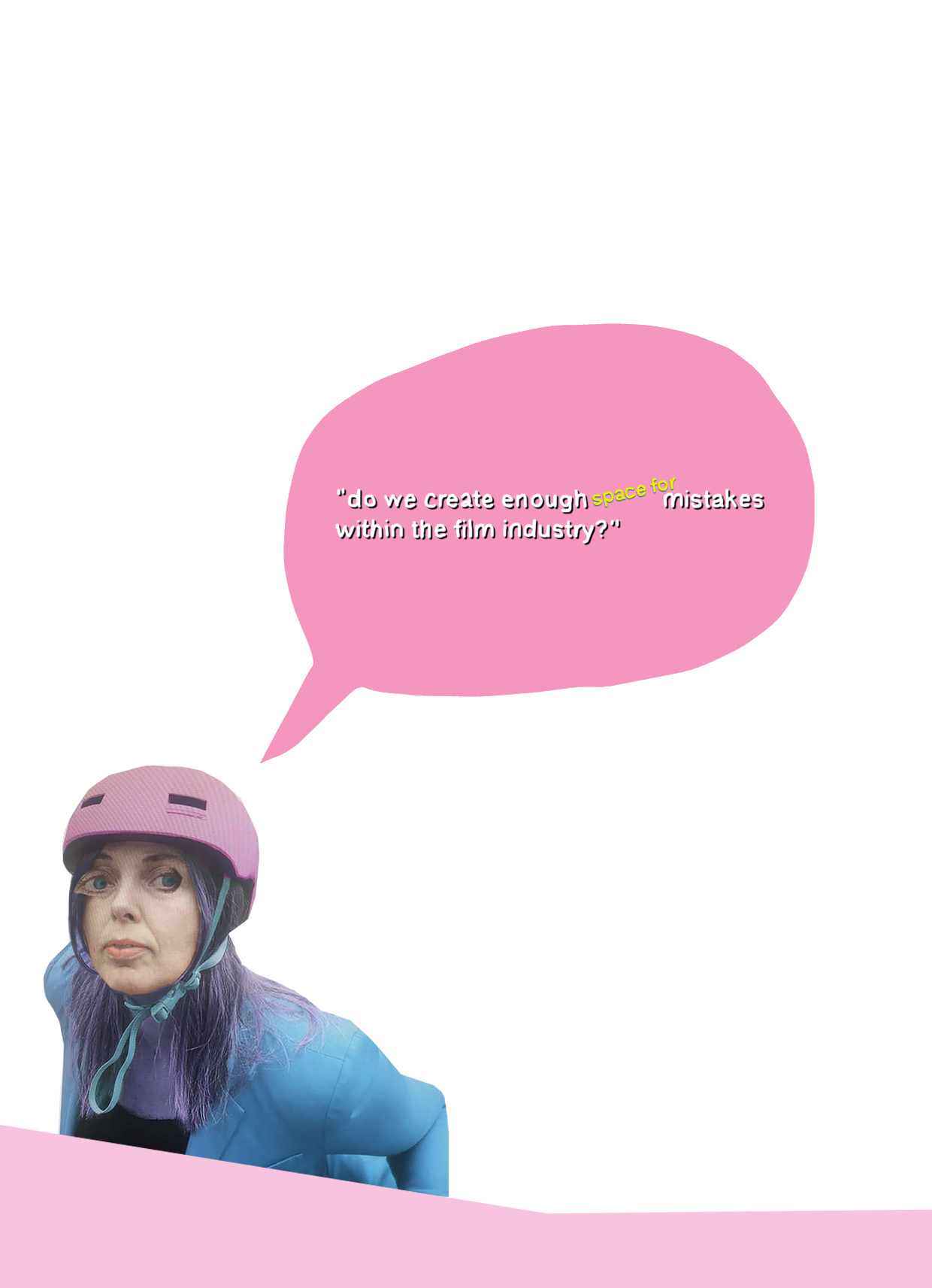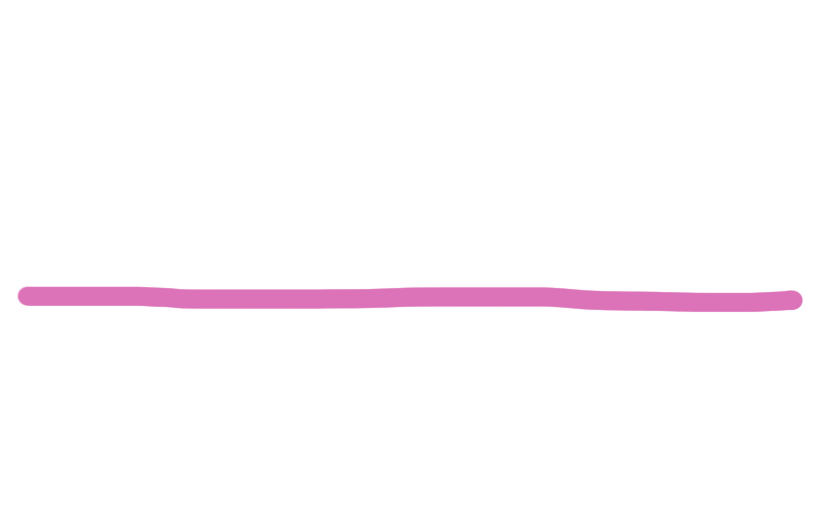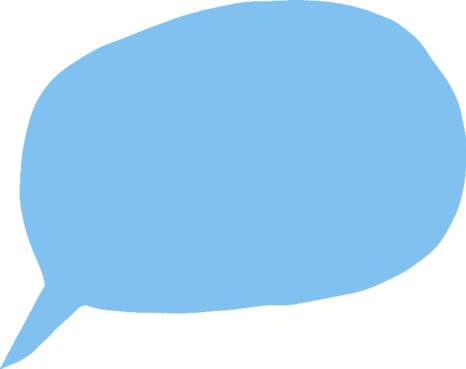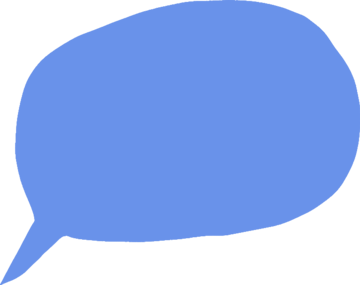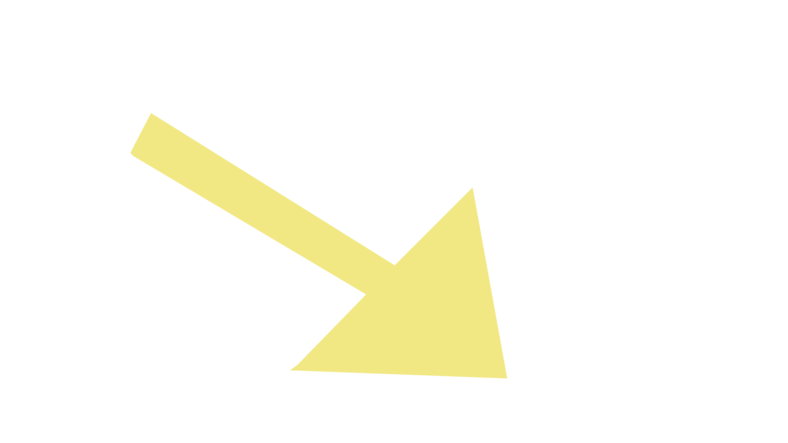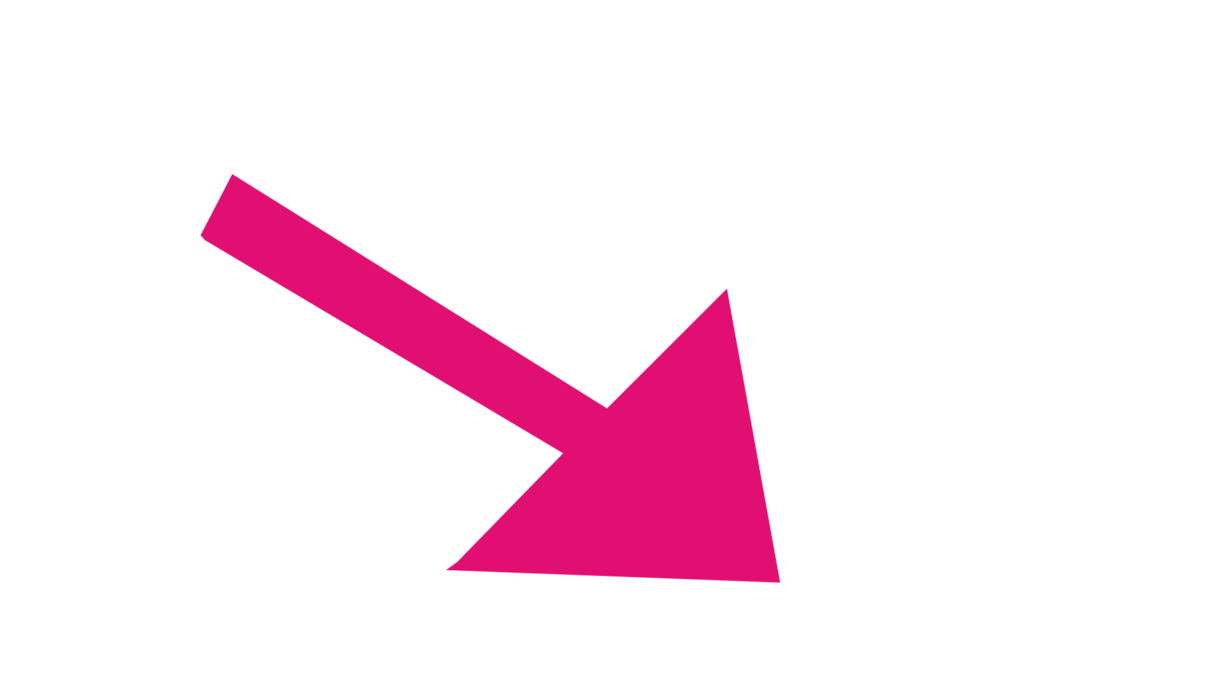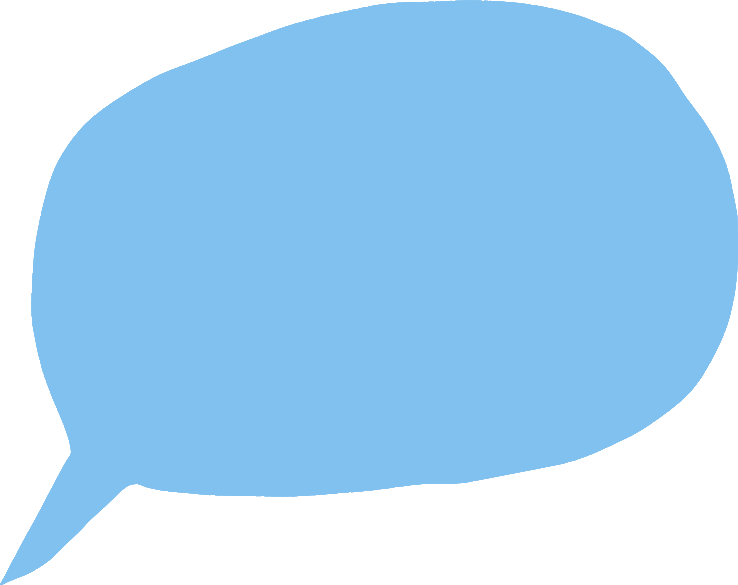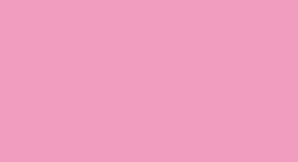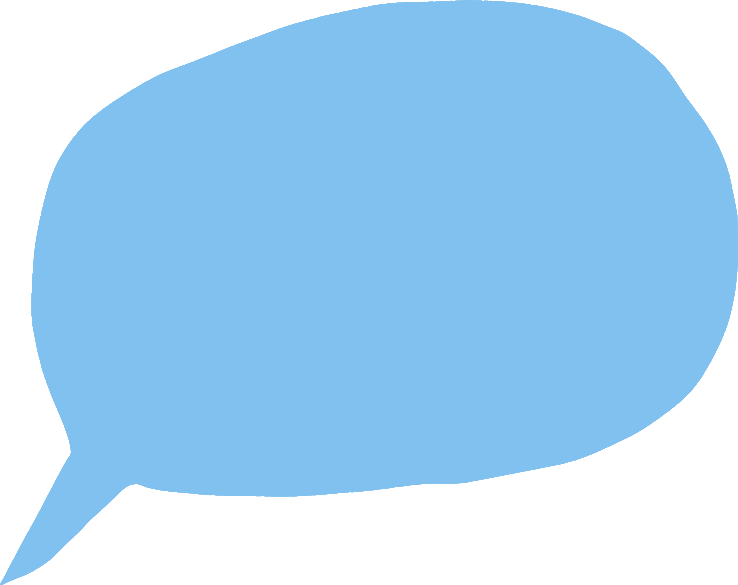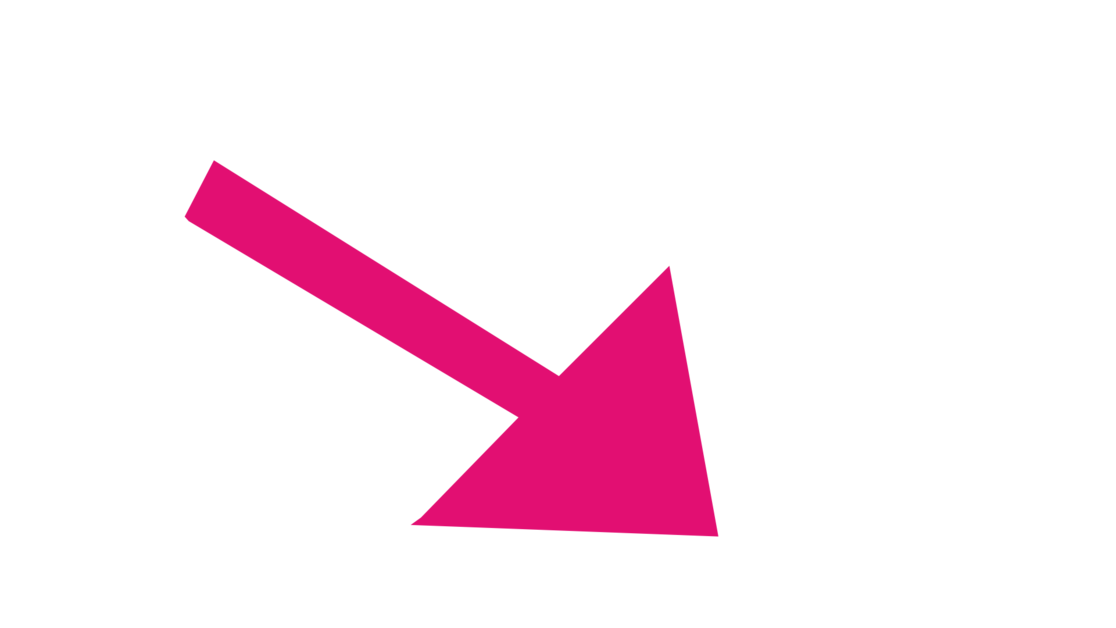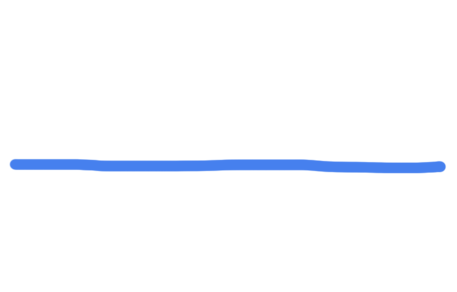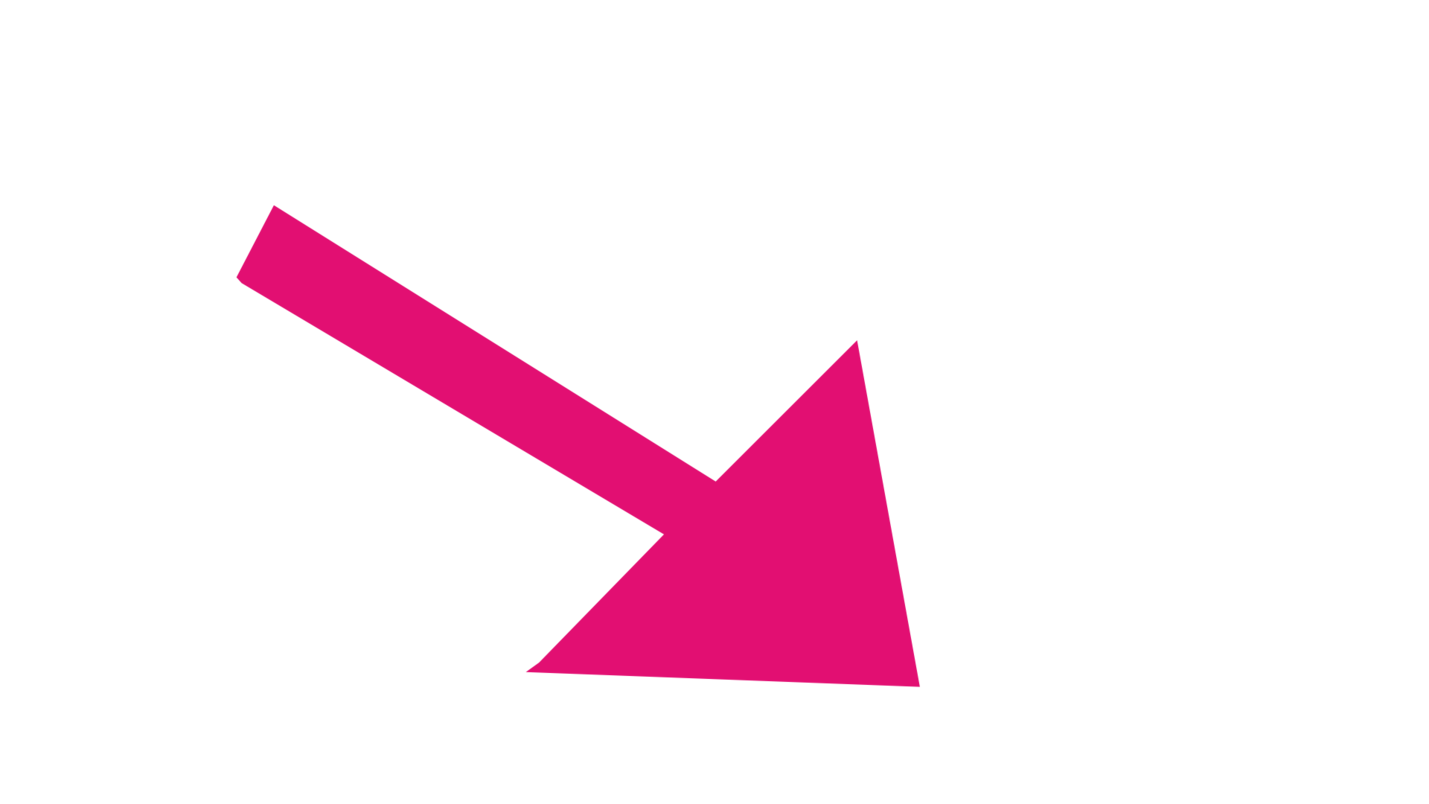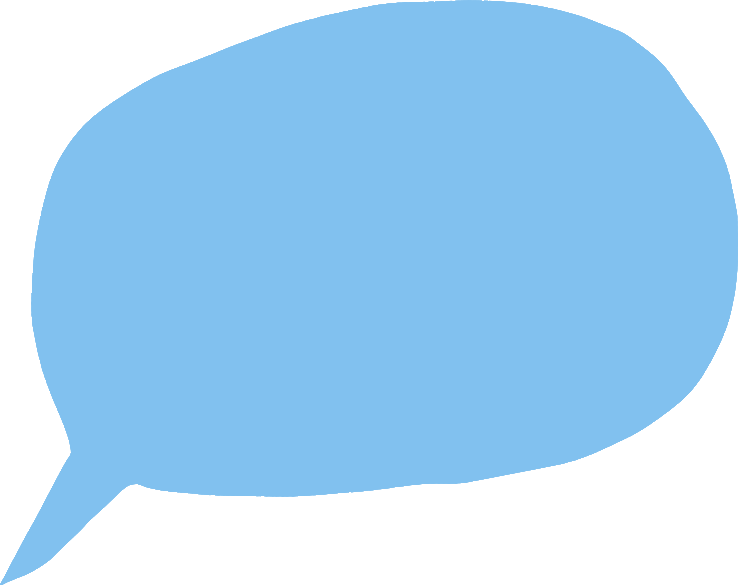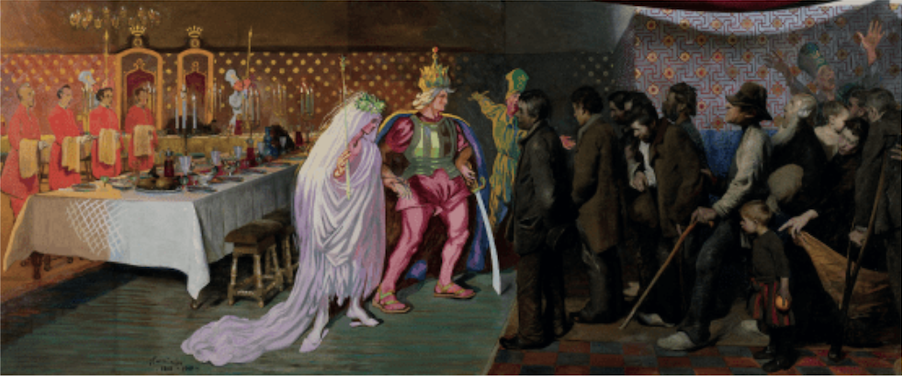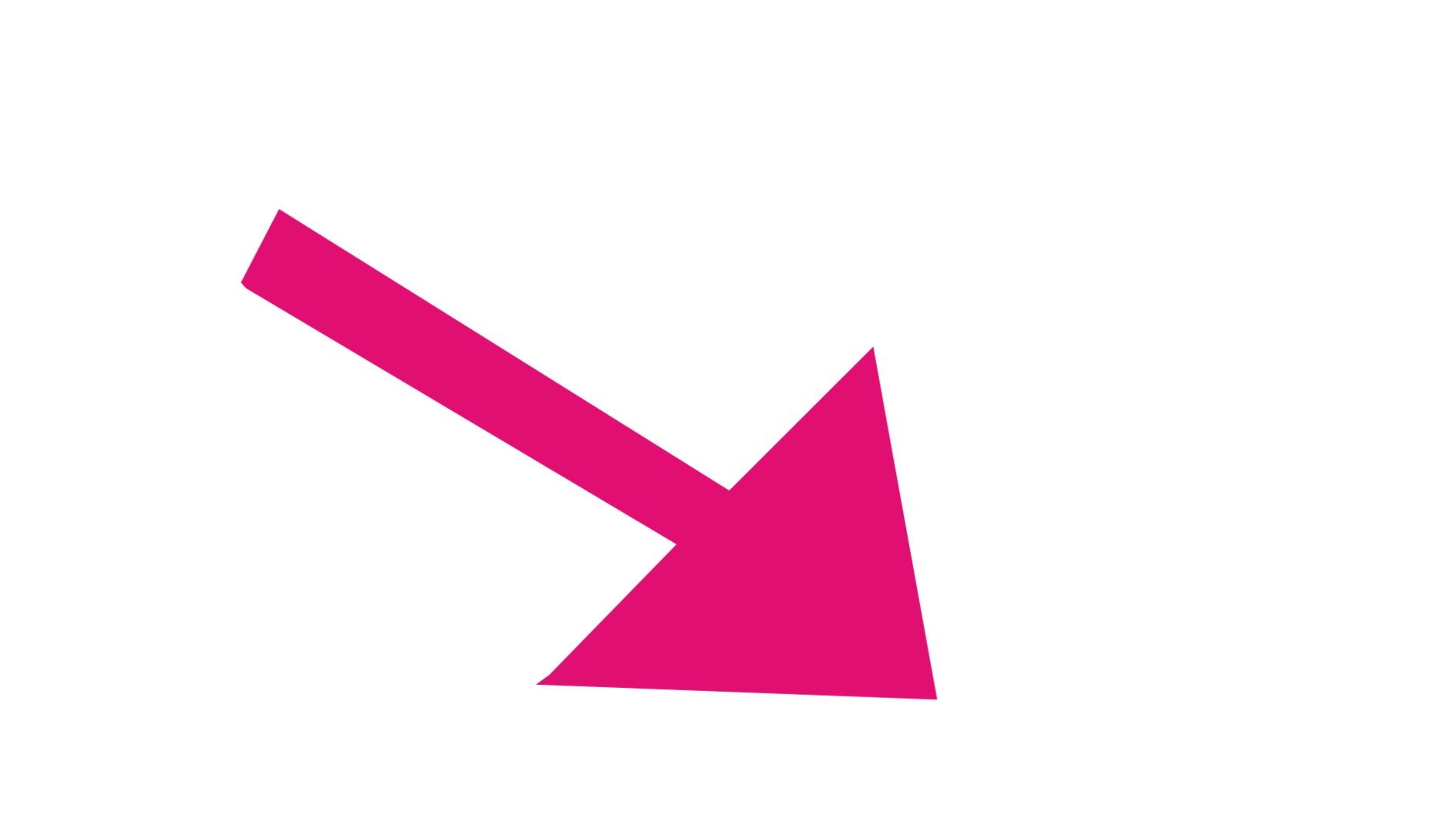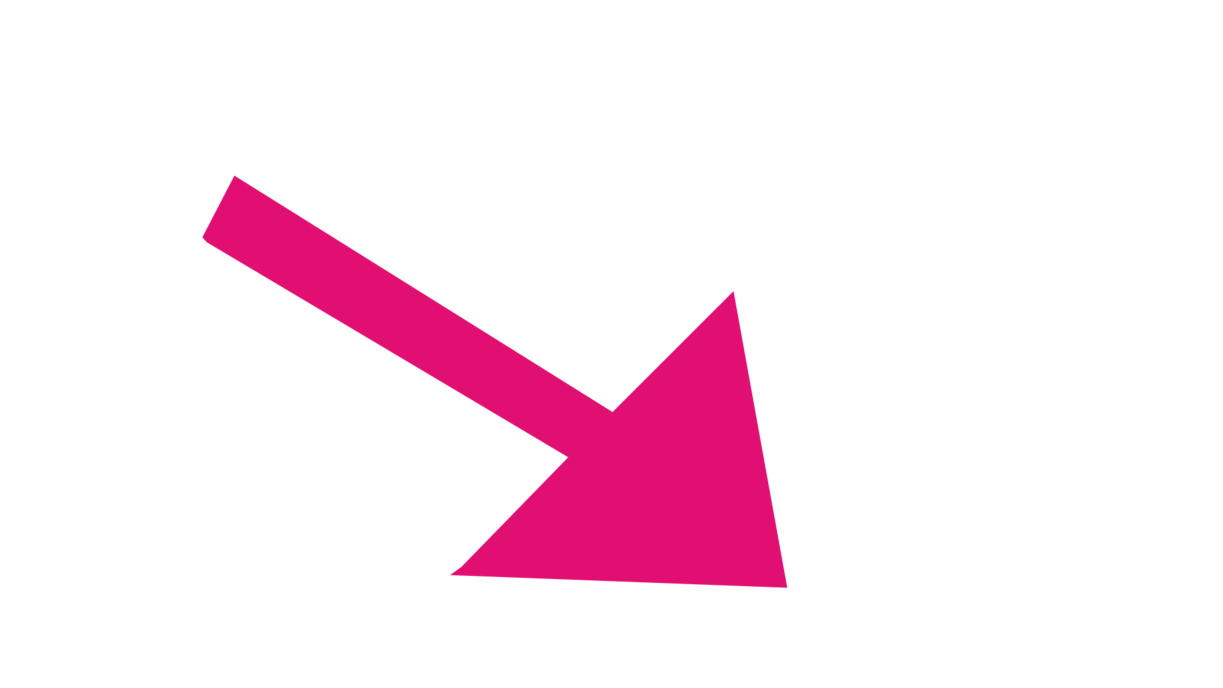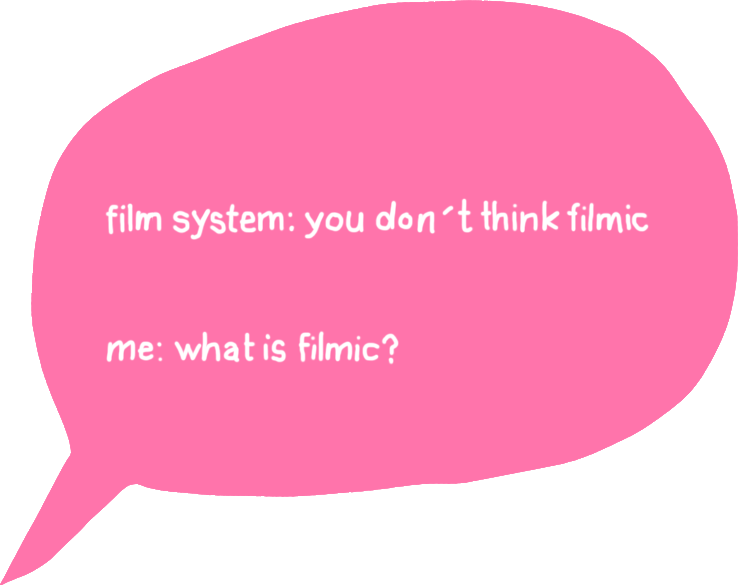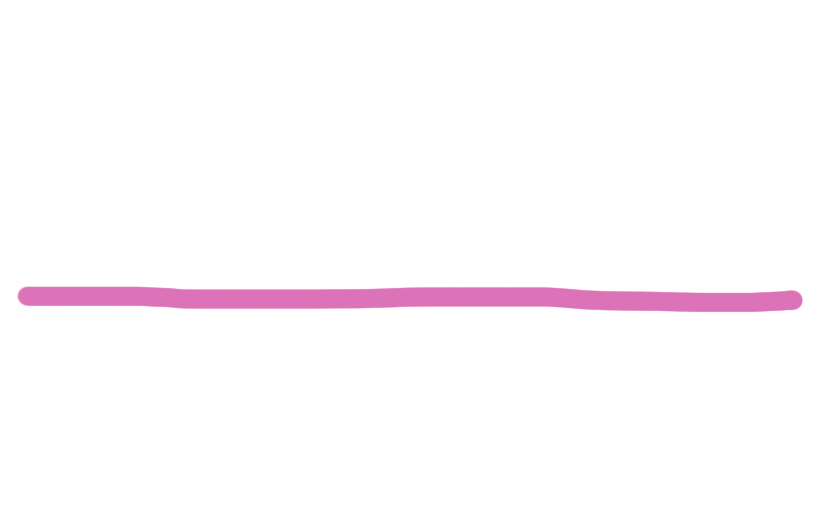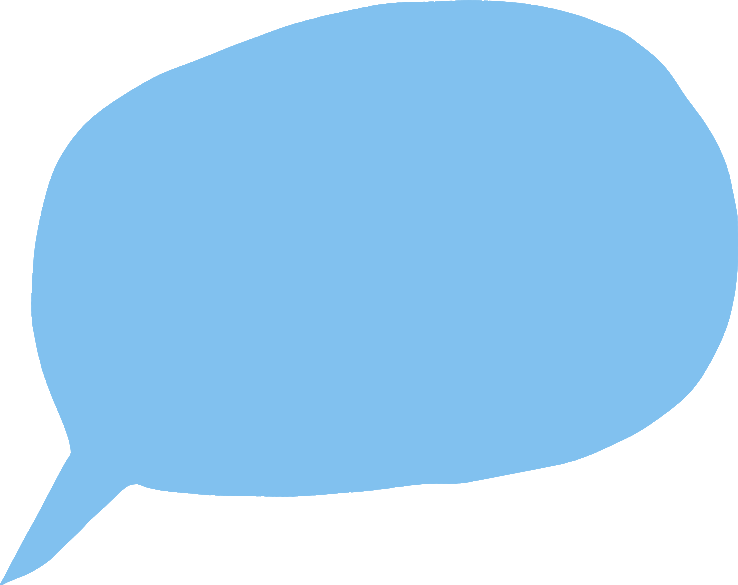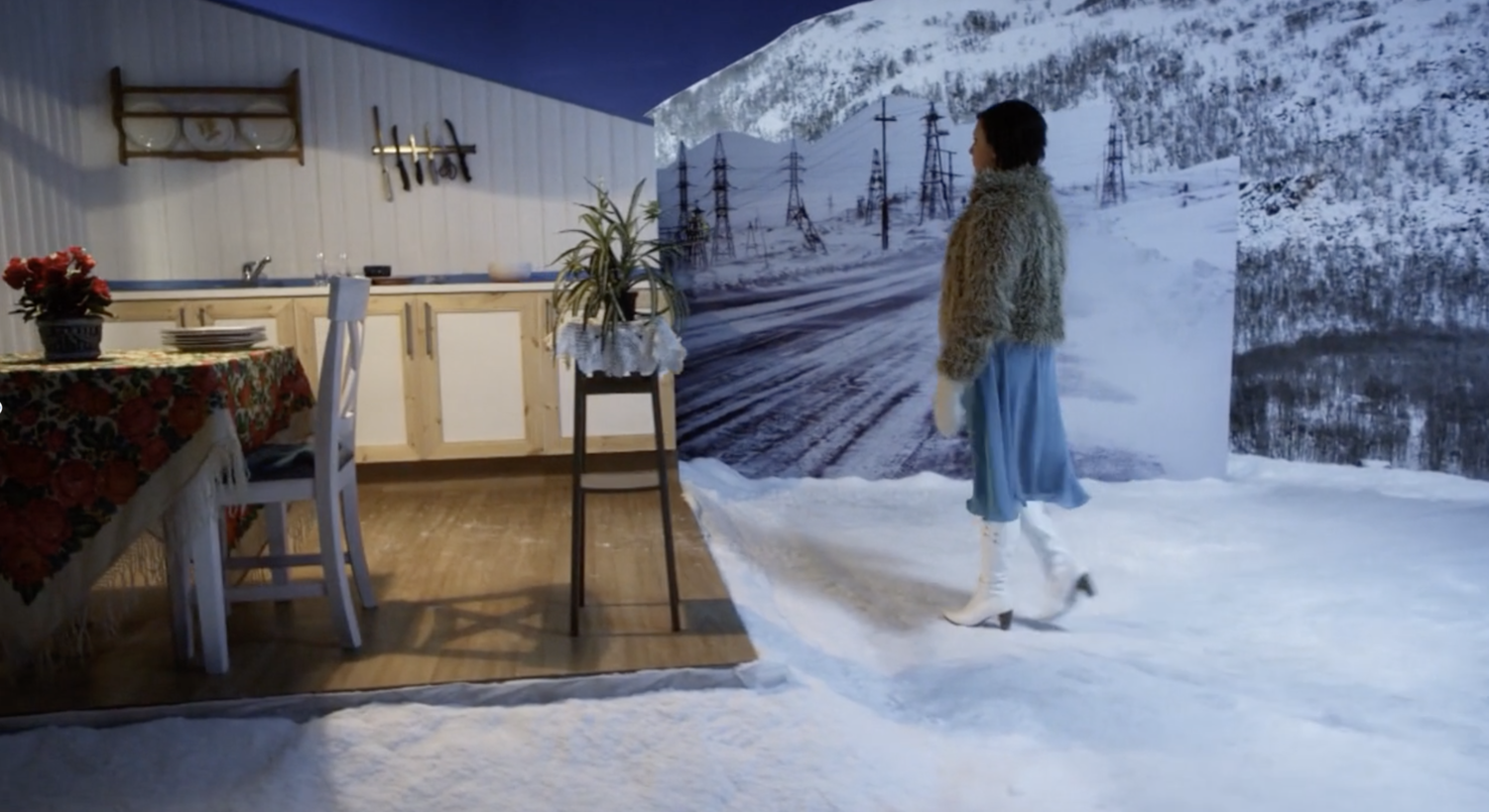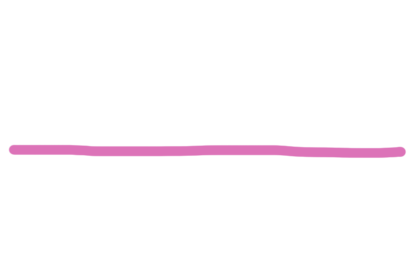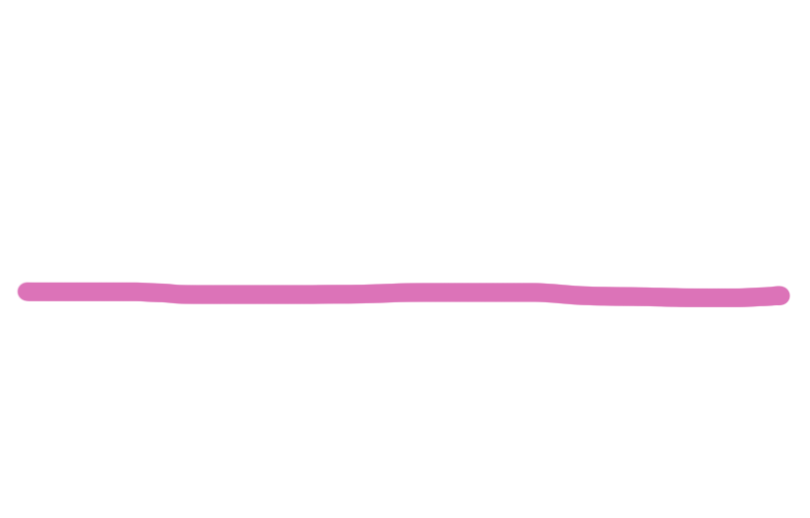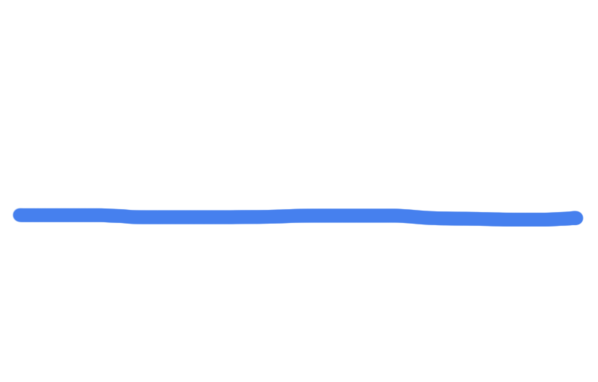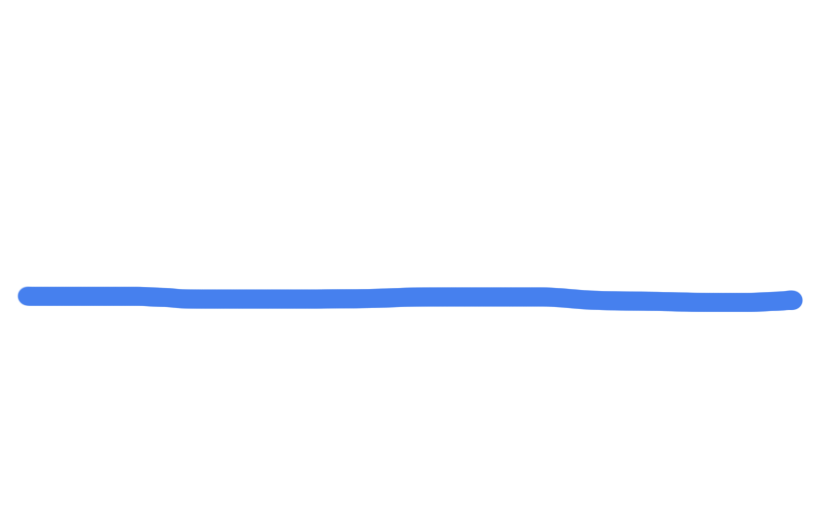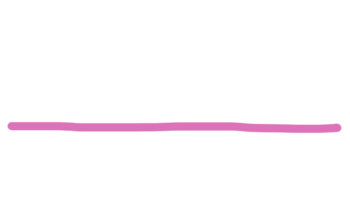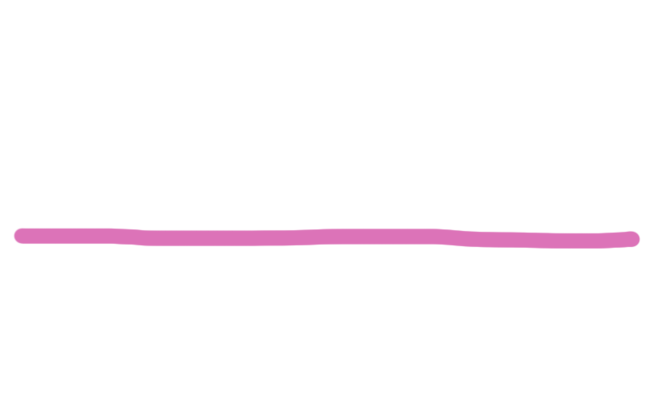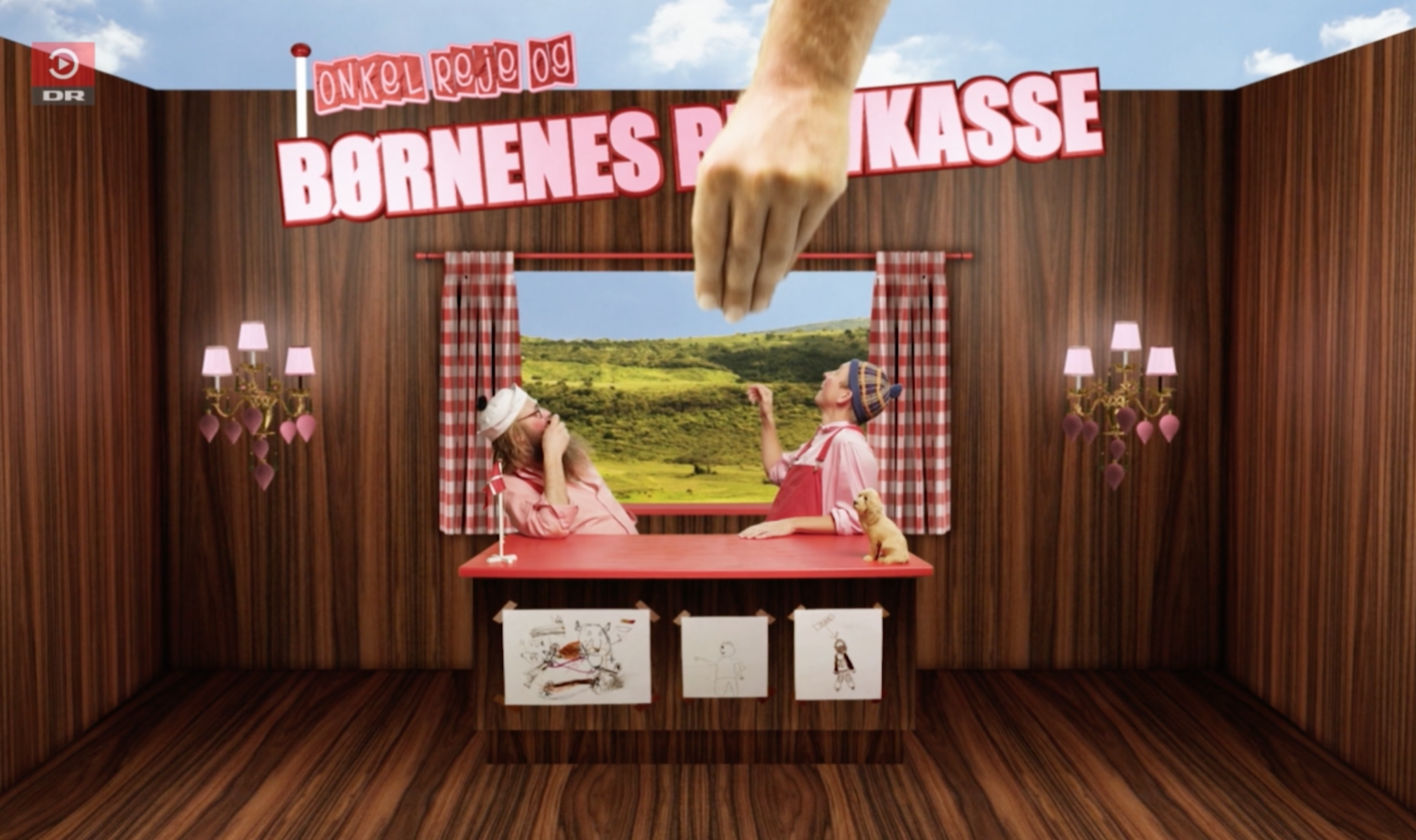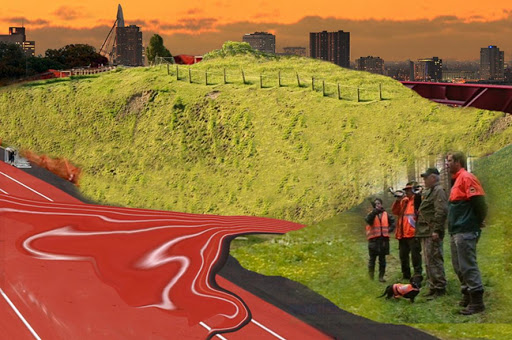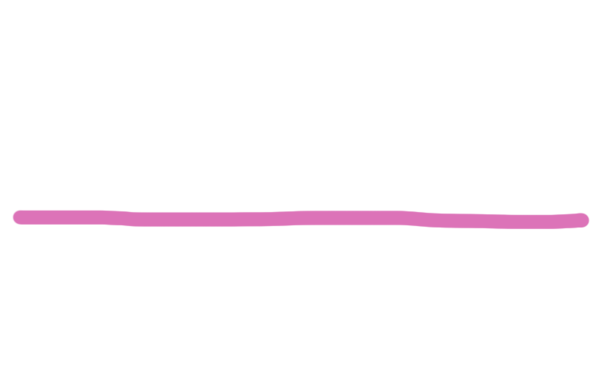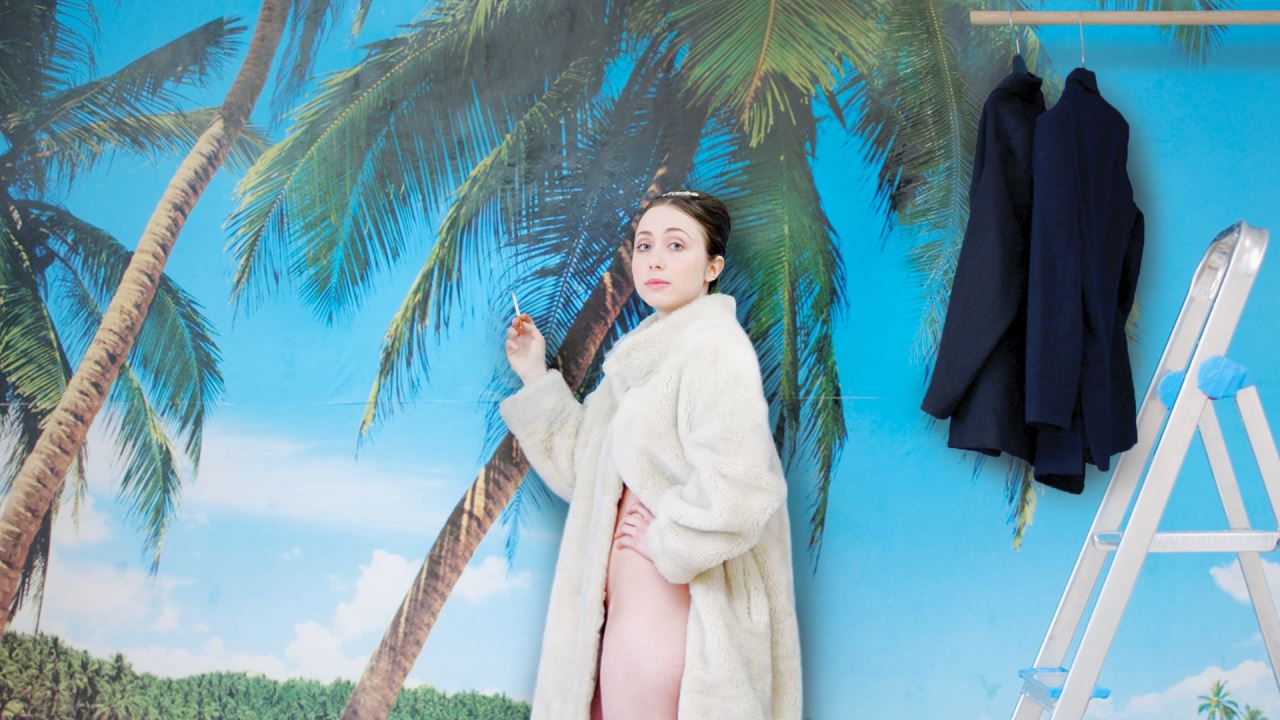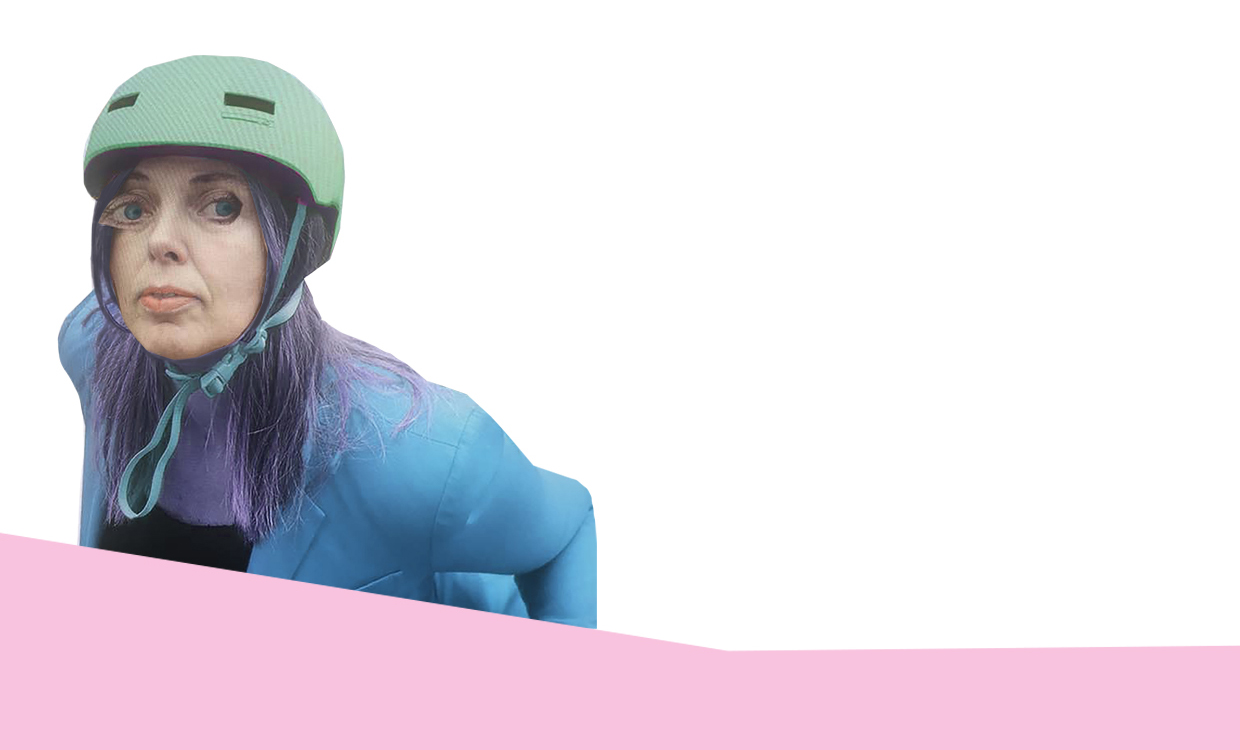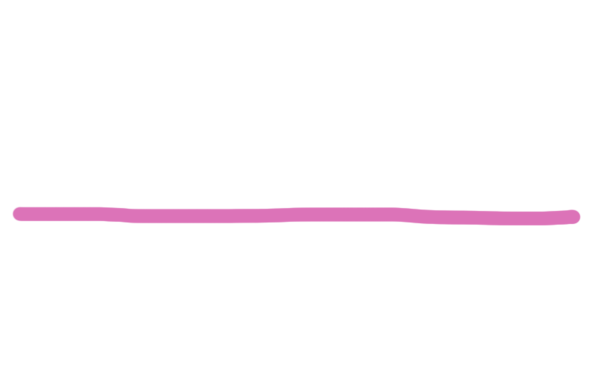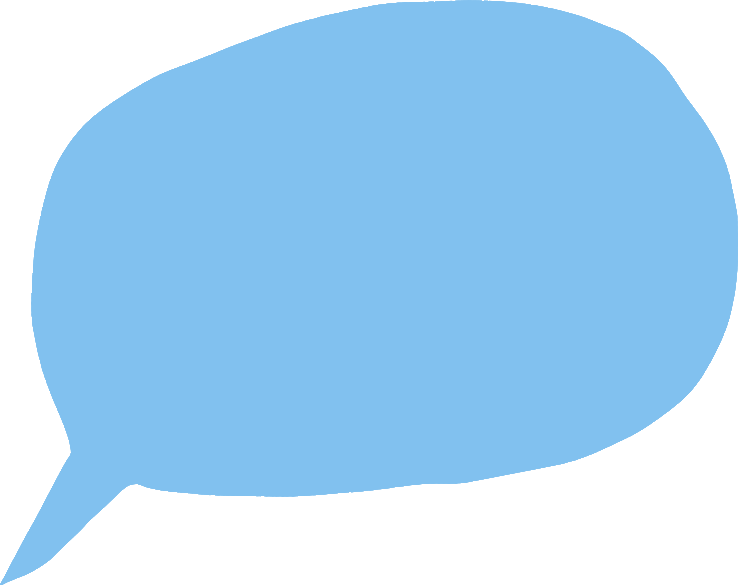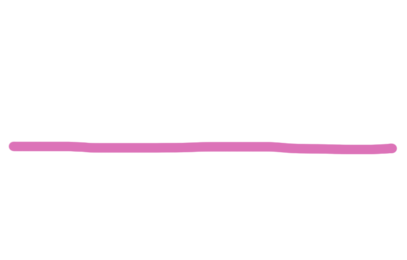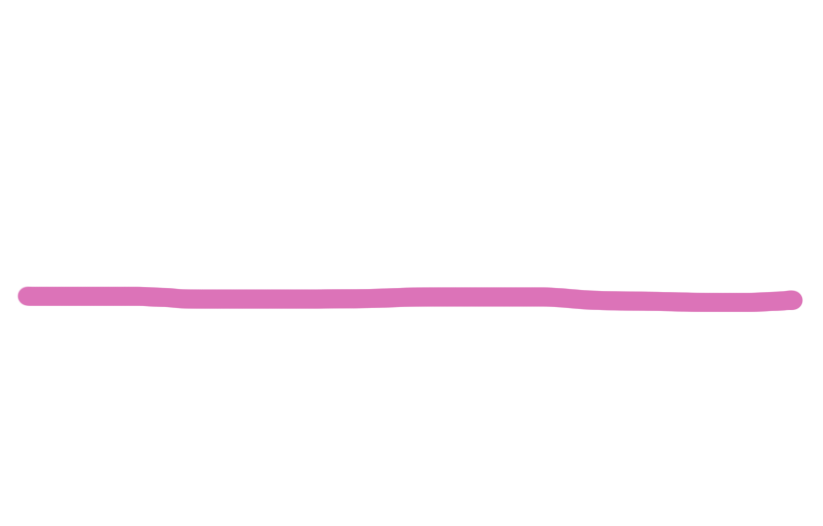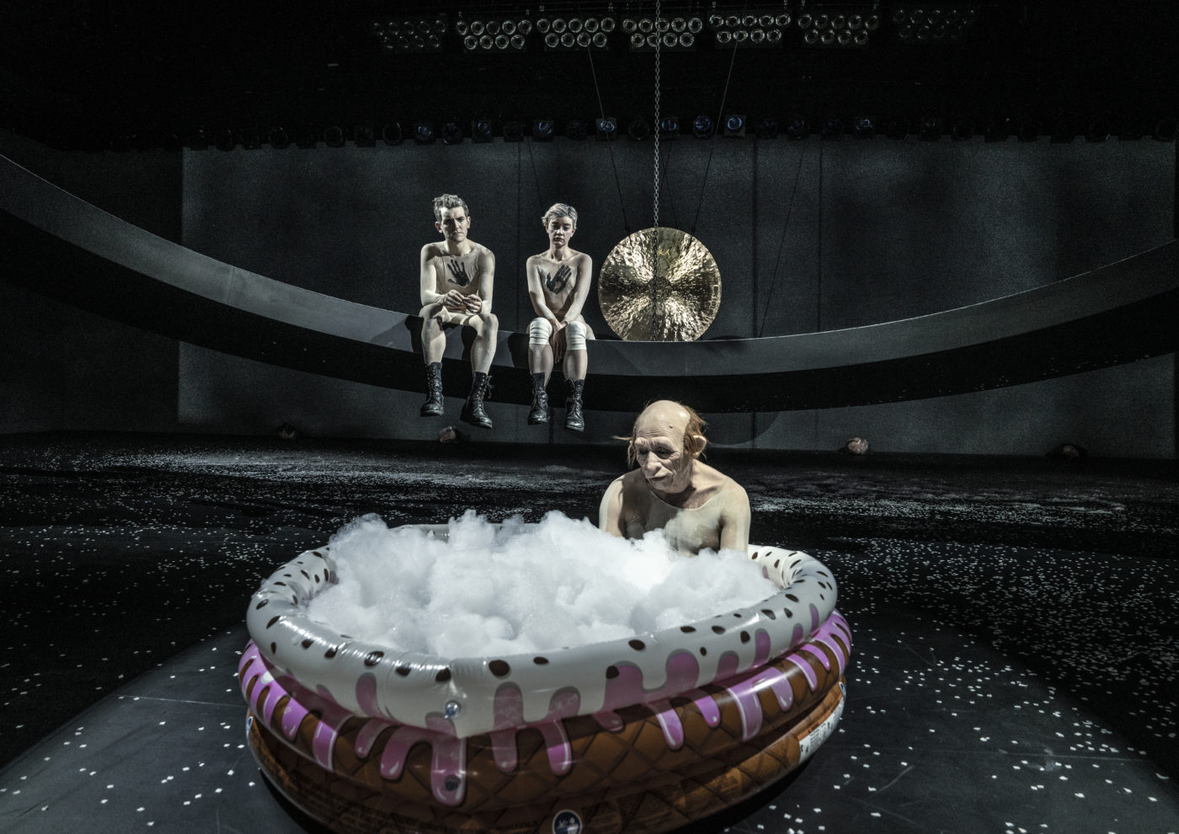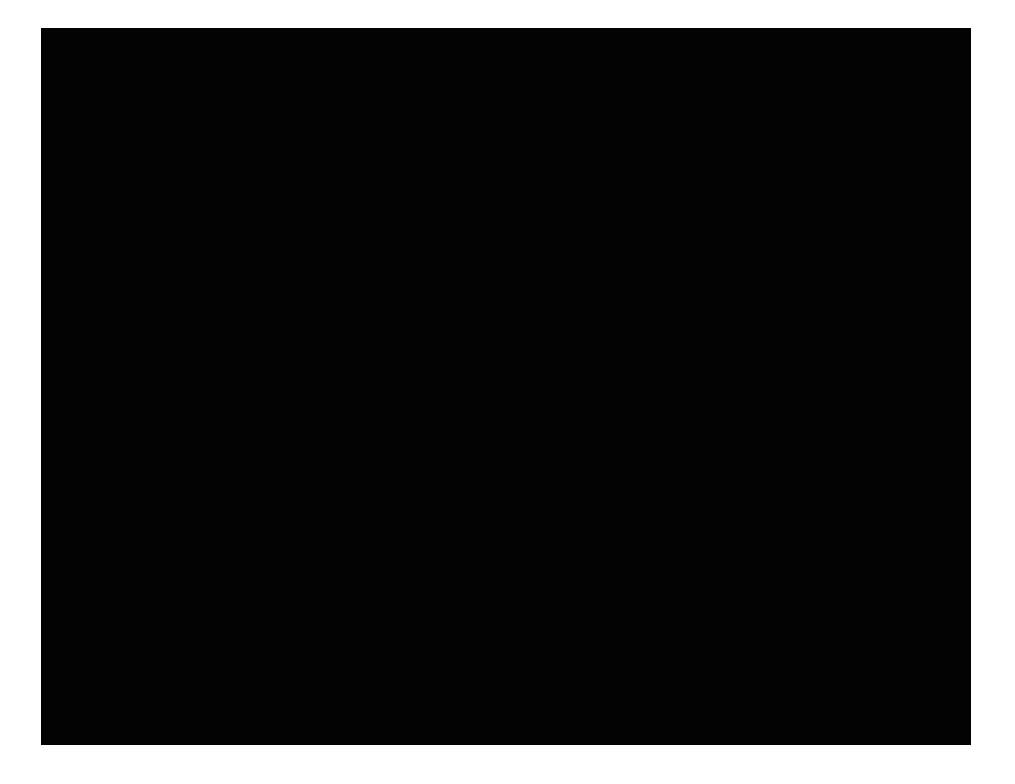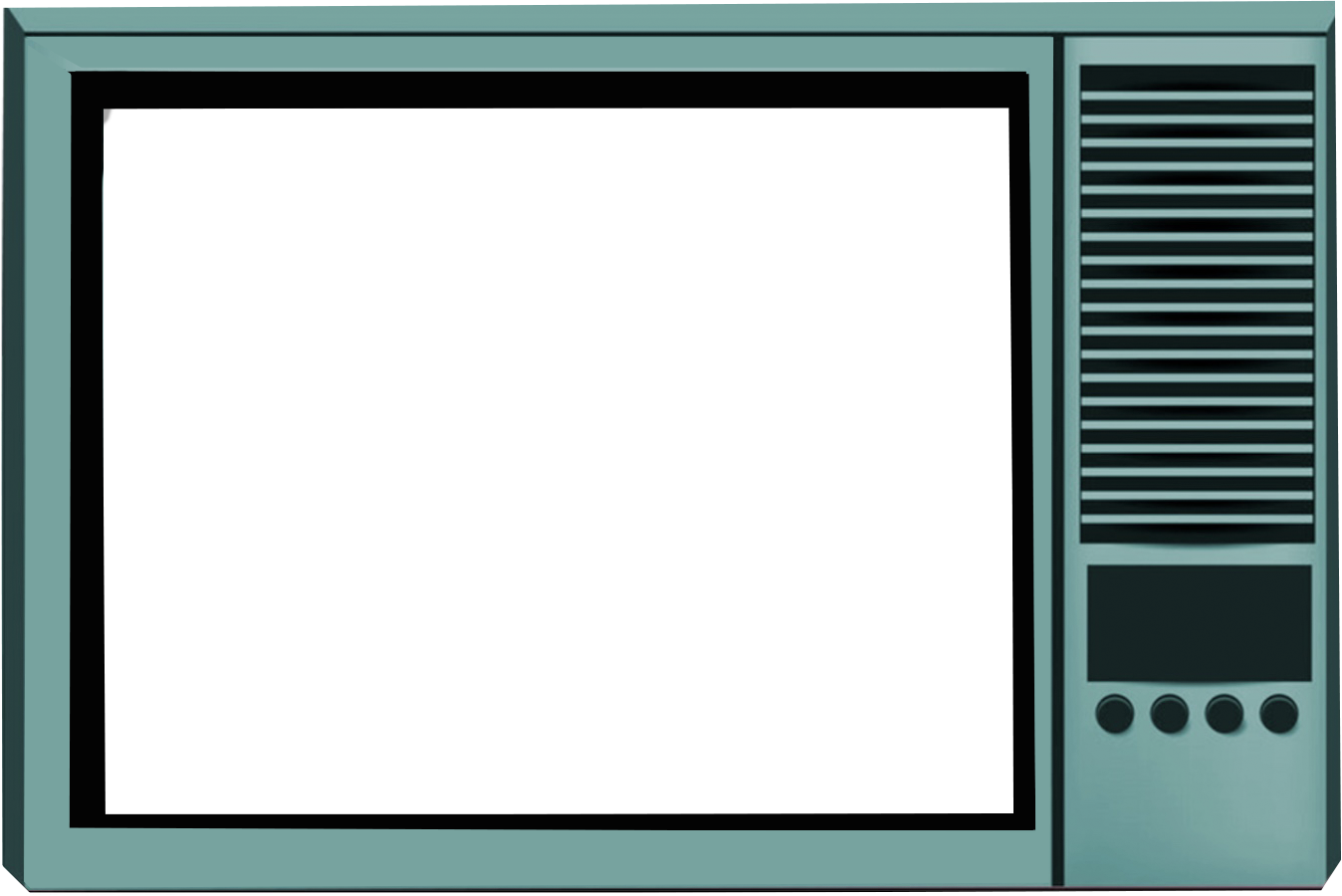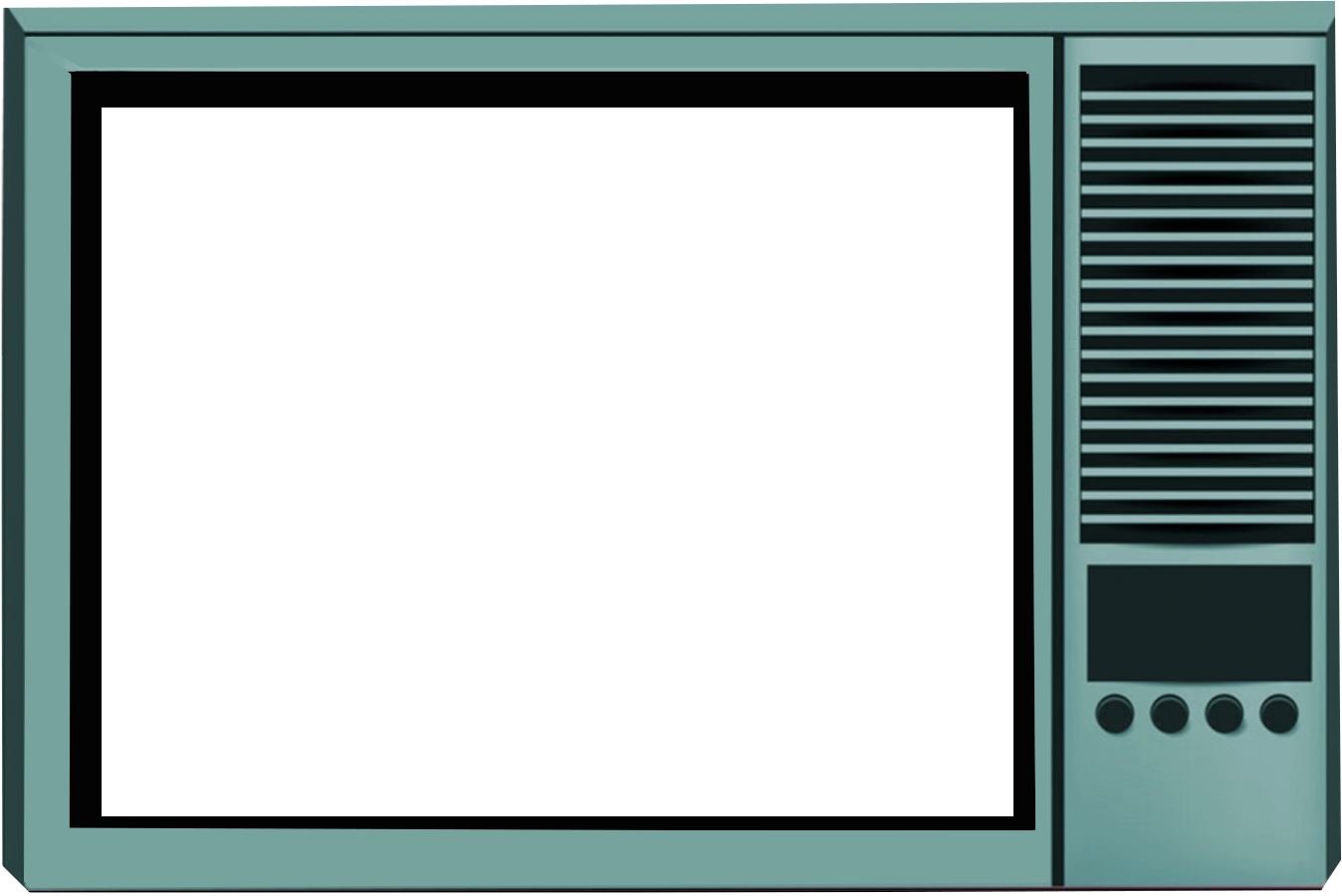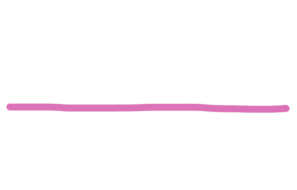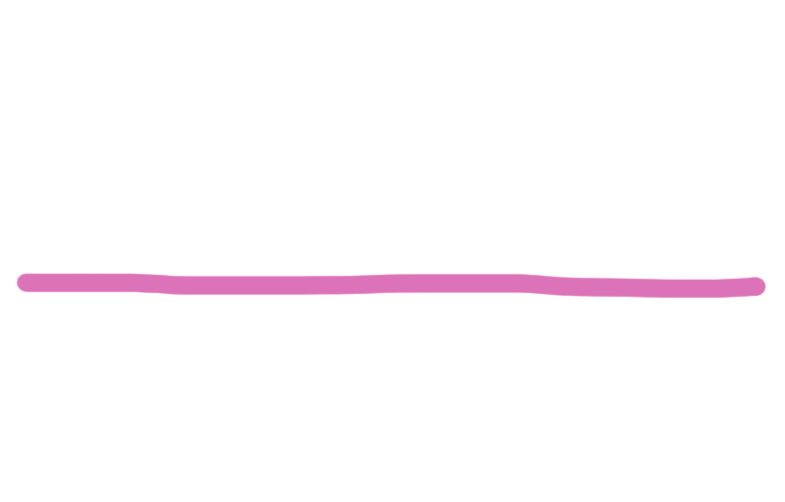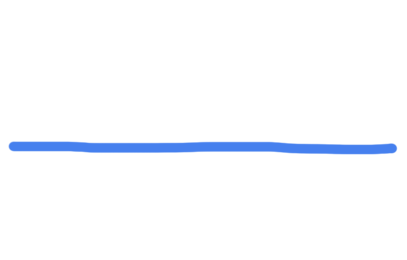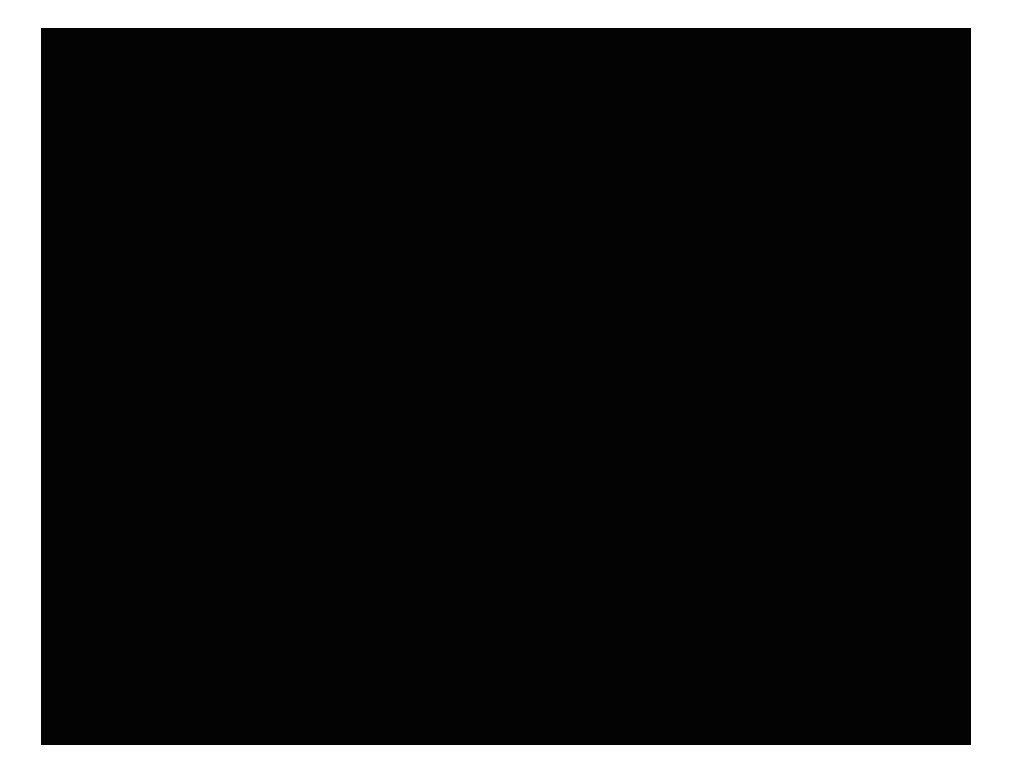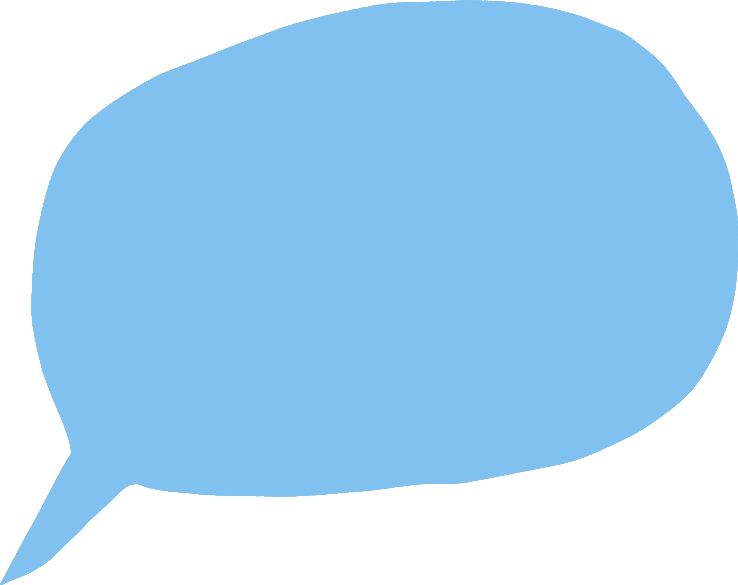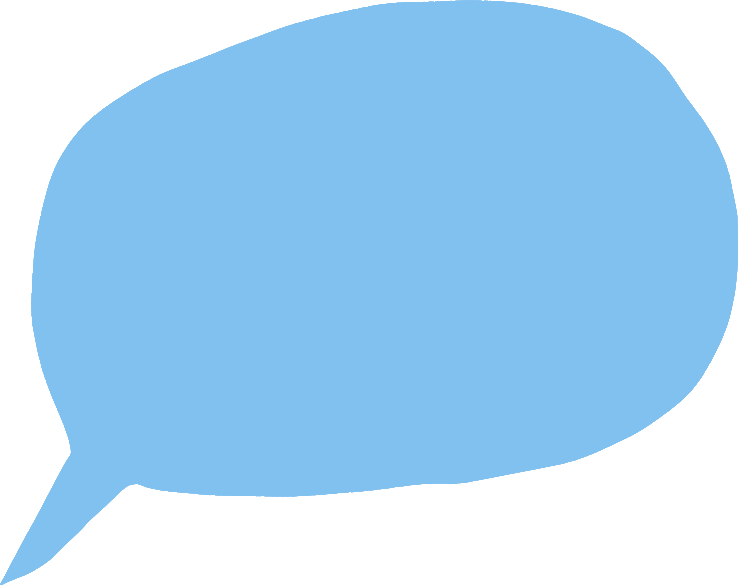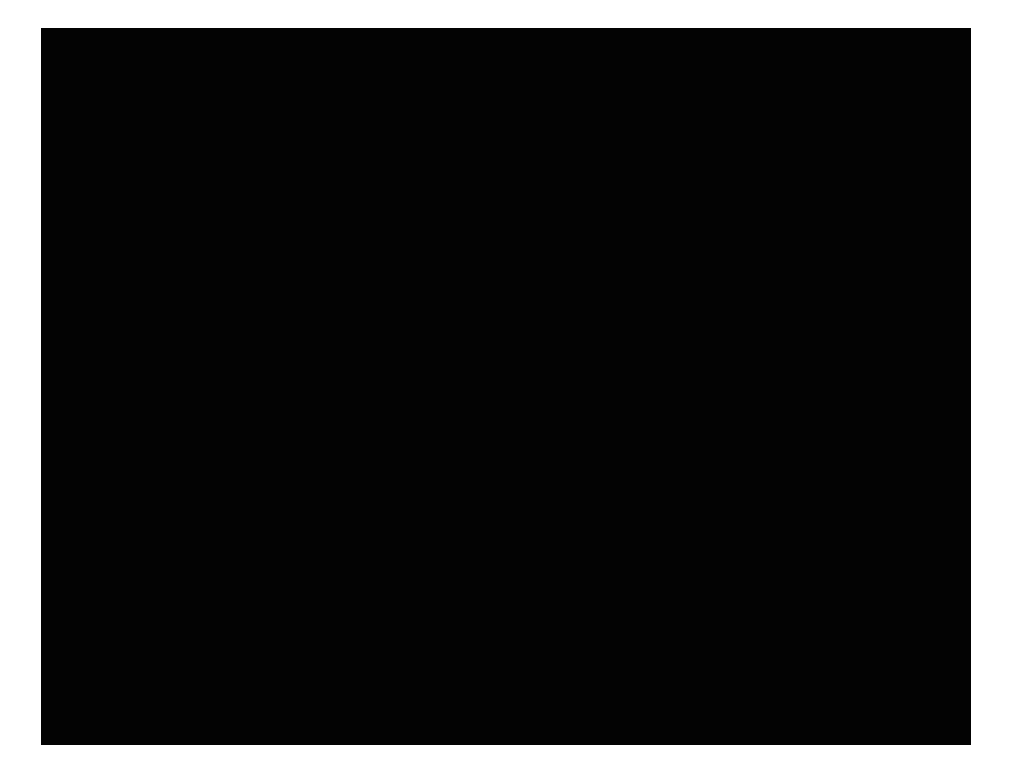THE AUDIENCE and OPEN PROCESSES
THE FILM SYSTEM
HIGH PRODUCTION VALUE vs LOW PRODUCTION VALUE?
BETWEEN VISUAL ART AND FILM, a method?
HOW TO ADDRESS THE ISSUE THROUGH LANGUAGE?
-a continuous discussion amongst Critical Friends
WHERE DO I SEE EXAMPLES OF EXPERIMENTING (FILM) LANGUAGES?
-the imperfect?
WHY IS IT IMPORTANT TO CHALLENGE A "SUCCESSFUL" FILM LANGUAGE
-and something about reality?
WHEN ART(ISTS) MEET THE SYSTEM
-framing/expectations
DO WE SPEAK THE SAME LANGUAGE?
-finding the right translation
THE MEDIA PLATFORMS AND THE FORMAT EXPECTATIONS
-my film experiments looked at from different places and perspectives
BIBLIOGRAPHY( in random order)
-literature, film, theatre plays and other media
“Hvad er et format?”, by Søchting & Schmidt, Konsthistorisk tidskrift/Journal of Art History, 2018
“Et værk uden grænser, J.F. Willumsens maleri Kongesønnens Bryllup 1888 og 1949”, 2009
“From Vatican to Vegas: A History of Special Effects”, by Norman Klein, 2004
“Zwischen Leinwand und Bühne: Intermedialität im Drama der Gegenwart und die Vermittlung von Medienkompetenz”, by Christian Steltz, 2010
“Unverfügbarkeit”, by Hartmut Rosa, Residenz Verlag, 7. Auflage, 2020,
“5 x Roy Andersson-Kortfilmer”, booklet with the DVD box set, Studio 24, 2010
”Erzählen-Schriften zur Theorie der Narration und zur literarischen Prosa”, Walter Benjamin, 2007
“Kulturkritiske essays”, by Walter Benjamin, 1998
“Brecht on Performance, Messingkauf and modelbooks”; edited by Tom Kuhn, Steve Giles and Marc Silberman, Bloomsbury, 2014
“Materials of the Cinematic Language- Video Sketching as a Foundational Tool”, KUV essay by Rasmus Kloster Bro, 2021
“How Has the Unstoppable Rise of Streaming Platforms Impacted Film? We Asked the Experts”, by Tom Ward, esquire, 2021
“The Technological Evolution of Filmmaking and its Relation to Quality in Cinema” by Ryan A. Piccirillo, http://www.inquiriesjournal.com, 2011
“How technology has changed the way we watch movies”, by daily news, 2016
“Beauty, ugliness, the sublime, and truth in art”, by Bert Olivier, January 2007
“To my students: On open processes, social imaginary and praxis” by Katya Sander, essay from Urgent Pedagogies (IASPIS), December 2020
“Cinema Studies, the key concepts”, Routledge, Susan Hayward, 2013
“Amusing ourselves to death”, Neil Postman, 1985
”A Voyage on the North Sea”, by Rosalind Krauss, Thames & Hudson, 2000
”Kunsten på lærredet”, Kosmorama 151, by Peter Scheppelern, 1981
“Virkelighedskunst", by Anna Raaby Ravn, Weekendavisen, Kultur, 24.02.2022
“Teatralitet og performativitet”, peripeti særnummer, performative former, Årg. 4 Nr. 7, 2007
Medieaftalen, Kulturministeriet, 2019-2023
“On cinema, What is the Creative Act“, by Gillez Deleuze, 1987
“Die Erfindung der Kreativität, zum Prozess gesellschaftlicher Ästhethetisierung”, suhrkamp tachenbuch by Andreas Reckwitz, 2012
“Life and Career of Neil Postman", c-span.org, The interview is part of a series profiling New York politicians and media leaders, 1988
"Betty Nansen møder New Danish Screen”, video recorded debate, 13.01.2022
“Das melancholische Mädchen”, feature film by Susanne Heinrich, 2020
“Manifesto”, feature film and film installation by Julian Rosefeldt, 2015
"The Caucasian Chalk Circle", theatre play by Teater Republique, written by Bertolt Brecht, 2022
"Motogod-Werke (Home of Gotthardt Motogod)" by Ulu Braun, 2021
”The Park”, installation videocollage, by Ulu Braun, 2011
”Fish Soup”, film videocollage, by Ulu Braun, 2005
”Jolly Weltschmerz”, cabaret by Kunstnerkabareten Riddersalen, 2022
” The Art Museum – a film cabaret” by Asrup & Bordorff, 2021
”Kandis for life”, documentary by Jesper Dalgaard, 2021
"Onkel Reje", children´s television, Denmark, 2012-2022
”The Wedding of the King´s Son”, painting by J. F. Willumsen, 1888 and 1949
This is the result of six months of Artistic Research conducted at The National Film School of Denmark funded by The Ministry of Culture and The National Film School of Denmark.
What started as a focus on something that could be called developing my own film(s) quickly turned into a curiosity on a larger and more general level. It became a curiosity and an ambition to look for possible ways to actually make some changes within the film system.
These changes are important if our society wants to keep any artistic ambition, and they are important seen from a belief that a film language has the obligation to take itself seriously, to take chances, and to do experiments BUT also, and even more, it is important because we are surrounded by an ever-present and continuous sea of images images images, from streaming platforms and SoMe, and these images needs to be seen with awareness and an eye for nuances.
Experiments in filmmaking has a long tradition as a way of exploring new technologies, forms and methods. There is nothing new to it – experimental film has always nudged status quo and challenged conventions, dominating or traditional narratives, as well as methods of working. This paper covers Artistic Research involving an experimental method where I as an artist explore the potential and the limitations for experimental films in the existing film developing system. The Artistic Research is based on four film projects I have developed on so far within the system, and then one film I have done outside the system, on my own without funding. I have noticed that when I develop a film within the film funding system , I end up with a product very much defined by the system. A system that doesn’t recognize filmmaking focusing on experiments.
to all participants:
Visual artists/filmmakers:
Annika Berg, Astrup/Bordorff, Ulu Braun, Susanne Heinrich, Julian Rosefelt, Katya Sander,
Guru Bruusgaard, Katja Eyde Jacobsen.
Critical Friends:
Frank Piasecki Poulsen, Nanna Frank Rasmussen, Tine Fischer, Anja Hauberg, Marie Nipper.
Representatives from within the system(film, museum, theatre):
Poul Nesgaard, Hans-Erik Philip, Arne Bro, Anna Henckel-Donnersmarck, Amalie Kjær Kristiansen,
Mette Tranholm, Katrine K. Pedersen, employees and students at Nordland School of Arts and Film(NKFS) and the Danish Broadcasting Corporation
Filmed workshops:
dramaturg Line Knutzon, Stina Mølgaard(actor), Claus Flygare(actor)
Critical text dialoque:
Rune Søchting
English proofreading:
Cecilie Nissen Jøhnk
Financial support and trust:
The National Film School of Denmark, The ministry of Culture
We have developed a strong codex for filmmaking. Maybe it is not written down as a set of rules, but if we look at the films being produced, we could find at least these unwritten rules as examples:
- we take a lot of our inspiration from real life, when it comes to the production design in a film
- we are interested in connecting/identifying with the main characters, and that with great pleasure from the use of close-up shots
- we put the film through a layer of something we call postproduction, in which we color grade the film, often with the wish to make the characters stand out, or with filters similar to the presets in Instagram.
- we often work with a natural perspective in the picture, so that the background is fading (the same way our eyes are doing it with something far away)
- we want to be able to use the camera with all the possible techniques invented (drone shots, dolly shots etc.)
"The Wedding of the King´s Son", by J. K. Willumsen, 1888 and 1949
“The real, real expensive films can make us forget that we are sitting in the cinema watching a film. The almost invisible, but highly effective mainstream choices, of the images, the editing and processing of sound, pull us so far into the narrative that we forget ourselves and the situation around us.
The artistic film - documentary as well as fiction - does the opposite:
It points to the construction, to the space, the light and - the eye. It points on its own createdness and makes its economical challenge an esthetic advantage”
Extract from the article “Reality Art” by Anna Raaby Ravn, interview with different parts of the film industry including Arne Bro, Weekendavisen, 24.02.2022, translation from Danish
(page 11, “Do we create enough space for mistakes within the film system?”)
Where and under which circumstances does film develop in a flow without fear of taking chances?
Is it possible, that when it flows, we as filmmakers listen to the way we really want to go with a project, and is that process leading to more diverse visual approaches?
The following paper is based on interviews with selected persons from a many layered film industry:
filmmakers, teachers, decision makers, film consultants, film critics, publishers, curators and persons curious to look at the system within and around film making, searching for mistakes and experiments.
In the paper I will unfold thematic aspects related to: the audience, the film system, open processes, the production value, the space in between (art and film, documentary and fiction), something about language, the mistake, experiments, the ugly, and expectations on format. I am writing this while on one hand looking at a system and at the same time being a part of that system myself.
It has been my wish to make room for voices and perspectives from the field around the production of film as well as my own voice. The paper will lead to a reflection in a final open nonclusion based on the research, and outline possible perspectives of developing new research.
Is there a space for experimenting within the system? and if, then I want to look deeper at that space or see if the eventually missing space is something to try and develop or further develop?
Do we create enough space for mistakes within the film industry?
I meet this Artistic Research in the same way that I would meet my different art projects; with the approach of a visual artist, with an open process approach:
"BORDER MUSICAL is not a description of the reality; it is a reality served in a spicy manner: through polished language and sharp definitions, exaggerated images and multifaceted characters, bizarre movements and eccentric scenes. Why cheer a mutual understanding when we learn from our differences?"
Extract taken from ChtoDelat.org, ChtoDelat is an artistic collective including Olga Tsaplya, director of "Border Musical", 2013
(…) You have to make room for this surplus production (...) We need to accept mistakes, the production of irrelevant things…because in this production, you will find something you need but you didn’t know you needed”
Quoted from conversation with Maria Bordroff(Astrup/Bordorff), visual artist and musician, translation from Danish
(page 6, "Do we create enough space for mistakes within the film system?")
“We are surrounded by images like never before. We communicate through images increasingly. For that reason, we need to be able to discuss what that means. And have a critical understanding of how we, as filmmakers, use images.
( … ) We do not know what this consumption of images does to us.
So therefore, it is important to also make sure that the images are nuanced, showing different perspectives, letting us discuss what we are presented to through a daily streaming flow.”
Quote, Katja Eyde Jacobsen, film director, part of a new production company in Norway, Alternativet Produksjon A/S, and head of Nordland School of Arts and Film (NKFS), translation from Norwegian
(page 14, “Do we create enough space for mistakes within the film system?”)
We have gained a lot of technical knowledge and become good at the plotted storyline, that´s true, but did we miss something else on that way?
Is there a space for experimenting within the system? and if, then I want to look deeper at that space or see if the eventually missing space is something to try and develop or further develop?
And do we create enough mistakes within the film industry?
"The open process
This might be quite obvious, especially for artists, scientists. We use what we already know, and we push and twist, investigate, experiment, mix, challenge, shift, and use our intuition and experience from there until we reach a slightly different place. From here, perhaps something else can be known and articulated than before. Or perhaps something similar can be known again, anew, in a different form, allowing this knowledge to operate in a different way. We set out in this activity without knowing exactly where we are going to end – since the very point is that we cannot ourselves imagine it clearly from the beginning either. In other words, we begin our work without a clear goal or result in view. Perhaps with a hunch, an idea or a vision, but never with a clear picture of what lies ahead, and what may be the final results. We may have a direction, but no destination or even destiny.
Let us call this an open process: Entering into an explorative process with tactics and strategies for working, with the experience and knowledge of materials, drawing upon previous experiments, but without an explicit end in view.”
Extract from the essay “To my students on open processes social imaginary and praxis” by Katya Sander, Urgent pedagogies, IASPIS, 2020
(page 13, “Do we create enough space for mistakes within the film system?”)
“There's a loooong way between the interesting pieces, and I think it has to do with the fact that we have become so very talented, (…) we have become so clever at making documentaries that the level and the criterion of success is so high, and that many people kind of aim at that (…) And then that’s why so many things end up looking the same. In that sense it is all very professional and clever etc. etc. But where do we then find the crazy, the experimental?
(…) everyone wants to perform. And everyone wants to play safe.
(…) and then the quirky and odd ones, like yourself, Carina, you end up standing very alone …”
Quote, Frank P. Poulsen, film consultant, Danish Film Institute, from a conversation in the advisory board Critical Friends, translation from Danish
(page 8, “Do we create enough space for mistakes within the film system?”)
Onkel Reje and Danish children’s television creates something I really would like to see in a movie for grown-ups. The approach is theatrical, too much and caricatured.
"...The internet contains an ocean of visual elements that carry messages and layers of meaning, which every one of us interacts with as we swipe, scroll and surf. New technologies have given each of us a direct channel that is tailored to the exact flow of images that matches our individual needs. It is an amazing service that has made the inexhaustible information of the world available around the clock. This development brought with it a whole new world of extreme mechanisms of influence – commercial, political and ideological. We encounter thousands of photos, but rarely do we think about the intentions behind them. Fake news, disinformation, propaganda as well as the power of algorithms and manipulative structures affect us all – children and young people, too. That is why it is more important than ever to be visually literate and to have a more nuanced and critical view in an image-saturated age”.
Extract from “The new extremism- visual literacy in an algorithmic curated digital culture” (Rapport by Katrine K Pedersen from Arken Tech Lab, 2020), translation from Danish
(page 17, “Do we create enough space for mistakes within the film system?”)
"We don’t really have a language for the emotional layers and the associative layers; when we make films (...) we know the associate layers very well from our own lives, we use them all the time, creating associate connections, but when it comes to the film media, we are not very good at finding ways to use them.
There is a language for the concrete, but not in the same way a language about the mental expressions.”
Quote from conversation with film composer and teacher at the Danish Film School since 1975, Hans-Erik Phillip, translation from Danish
(page 26, “Do we create enough space for mistakes within the film system?”)
A place to look for inspiration to bring into a film experiment is Bertolt Brecht. Brecht didn’t do films, though, but if he would have done films, and maybe something for Netflix, I think it would have made me happy. And that lies mainly in the way he worked with Verfremdung, always at some point breaking with the idea of a fiction, and letting the actors talk directly to the audience.
Apart from Brecht also adding a great lot of absurdity and humor to a language (the language of theatre), there is another need for Verfremdung today, I am sure. It has to do with the way we absorb enormous amounts of images every day.
Framegrab from Ulu Brauns video installation "The Park", 2011
"...when you get the idea that Danish film is doing extremely well, since we have now for several years received nominations and won Oscars, but if we then look at what kind of films get support, and how are they actually doing, how does the picture look then?
The Danish films are doing good on a domestic market, we have one of the biggest domestic market shares in Europe…but what is the special capability of Danish film artistically, how are we doing on the international art house scene?
Is it actually the case that the artistic rethinking, that among others Lars von Trier and the Dogma-movement stood for back in the ‘90s, now is to be found in a new form? In that case, it becomes more difficult to see a picture emerge. And that’s why it is important to take film as an art genre serious. (...)
It demands something from within the whole system, all the way from the film school to the producers, the funding system, the distributing institutions and to the press and other dissemination platforms"
Quote, Tine Fischer, head of the National Film School of Denmark and earlier head of Copenhagen Dox, part of Critical Friends. from a conversation in the advisory board Critical Friends, translation from Danish
(page 7, “Do we create enough space for mistakes within the film system?”)
Framegrab from "Das melancholische Mädchen", by Susanne Heinrich, 2019
The painting, “The Wedding of the King's Son” by Danish painter J. K. Willumsen, hits me when I search for a description of a film I would like to do, if I were in a situation where I was allowed to show only one image to someone - that could be, say, a decision maker at the Danish Film Institute.
Da jeg startede på Filmskolen i 2008, var det med en lille lyst til at tilføje en ekstra dimension, et ekstra lag, til min praksis, der dengang udsprang i billedkunsten.
Det sidste jeg havde beskæftiget mig med, akkurat inden jeg blev optaget, var collager på papir. Og det var ideen om at lave en levende collage, jeg søgte efter de første år på Filmskolens animationslinie.
Det var en tid præget af megen følelse af, ikke at passe ind i et filmsprog(det jeg mødte i branchen og på filmskolen). Hverken i animationsfilmen eller i realfilmen, kunne jeg spejle mig selv.
Det jeg selv havde tænkt som en udvidelse af mit billedkunstfelt med 4,5 år på Filmskolen, var en ny viden om at de to verdener, billedkunst og realfilm er så utroligt opdelte. På trods af at filmen har eksisteret i kunstverden siden eksperimentalfilmens ankomst, er der i 2021 meget få spor at se på de brede visningskanaler. Man skal i kunsthaller eller i Arthouse biografer for at støde på film, der leger med, det der interesserer mig mestendels, filmens billede og filmens blanding af flere forskellige slags billeder i samme film.
Når det er sagt, så vil jeg gerne kommunikere til et større publikum end kunstgalleriet. Der har jeg været for år tilbage, og en af de store grunde til at jeg søgte ind på Filmskolen, var at jeg savnede en grund til det jeg producerede. Jeg savnede at få det ud. At få en genklang hos forskellig slags mennesker, også de der ikke tilhører en kulturelite.
...a film language has the obligation to take itself seriously, to take chances, and to do experiments BUT also, and even more, it is important because we are surrounded by an ever-present and continuous sea of Images! Images! Images!, from streaming platforms and SoMe, and these images needs to be seen with awareness and an eye for nuances.
"I was interviewed by a Dutch journalist the other day, who wanted to know why Danish film is so successful and why it's doing so good. I also recently attended an online seminar posing the same question. What I found interesting was that nobody defined what they meant by success, what criteria did they ask from? It becomes very diffuse. Of course, we can all be happy that there is an image about Danish film doing really well in the world, but it would be a good idea also to define what “good” and “successful” really mean…”
Quote, Nanna Frank Rasmussen, film journalist and president of Danish Film critics association, and part of Critical Friends from a conversation in the advisory board Critical Friends, translation from Danish
(page 6, “Do we create enough space for mistakes within the film system?”)
Recently I saw a Brechtian theatre play: “The Caucasian Chalk Circle”. You could talk about it being “too much”. Or you could talk about it being “exactly how it should be”. Loud and screaming actors but then all of a sudden, the humour and absurdity sets in. It’s subtle but it’s there. In the choice of for examplea plastic pool and a man with a mask, that reminds one of Paul McCarthy’s use of masks in e.g. his video works("The Painter")
I think the film language could need a new revolution when it comes to the way to deal with reality in film.
”I often find that I get a positive response to the final product - the finished film, I almost always get this comment from the funding system, when I start working on a new film: “It’s really interesting, but maybe it belongs in a gallery instead of a movie theatre?”. In my experience, most people enjoy “innovative” products, but have a hard time understanding that innovative products often call for innovative processes. If you walk on the same path, you’ll most likely arrive at the same destination - it’s not rocket science”
Quoted from conversation with Annika Berg, film director, educated from the National Film School of Denmark, director of the feature film “Team Hurricane”, translation from Danish
(page 11, “Do we create enough space for mistakes within the film system?”)
- how can you approach a film making development process, when the wish is to challenge the visual film language AND to make your films end up in front of a wider audience?
- how can a platform like the Danish Broadcasting Corporation help in that process?
- are we in need of a place for those film projects to find film support/funding?
- can we challenge the audience and “push something into their mouth whilst wide open”?[1]
- how can the (film) reviewer use the journalistic field to e.g. look at what is being reviewed and how?
”...and of course it is relatively anachronistic to work like that in this contemporary paradigm that is very focused on content. And all the time you have to explain yourself and why you create a distance to the audience. But to me it is exactly about this distance, which is also the interesting about Brecht, that for him it is NOT about that you as a member of the audience don't identify (…) but it has to do with the fact that identification is often understood as a kind of transmission, but that he prefers to understand it as a way of recognizing yourself in the structures presented to you. And that is only possible to understand if it is shown to you in a certain abstract way or through alienation. And that's why I find Verfremdung so interesting.”
Quoted from conversation with Susanne Heinrich, award winning author and film director, “Aren't You Happy?", translation from German
(page 18, “Do we create enough space for mistakes within the film system?”)
"I am not desperate 1-5",
five film sketches on desperation,
by Carina Randløv and Stina Mølgaard, 2020
"You look real foolish"
Film director Carina Randløv and actor Stina Mølgaard are trying to figure out, the visual language of the film, 2021
"Is there no script?"
Film director Carina Randløv and actor Stina Mølgaard are trying to figure out, whether they can agree on what kind of film Carina is doing.
And why is there no script?!, 2021
During this Artistic Research I have had a board that I named Critical Friends around me, consisting of Tine Fischer (former CPH Dox, and now head of The National Film School of Denmark), Nanna Frank Rasmussen (film journalist and president of Danish Film Critics Association), Frank Piasecki Poulsen (film director and film consultant at The Danish Film Institute) who all participated in continuos meetings during the Artistic Researchand Anja Hauberg (Commissioning editor at Danish Broadcasting Corporation), who joined after the second meeting, and ended up taking part in just one meeting.
I asked exactly those representatives for the sharing of thoughts, because I imagined them to share the interest for an artistic approach to the film language.
SOME FILM EXPERIMENTS
The videos were done with actor, Stina Mølgaard. The attempt was to see what would come out of spending more days together with the focus on our relation, Carina and Stina as just persons, and then at the same time as the characters Carina and Stina.
What we brought to the workspace was a written page, on a topic I was curious to discuss.
In the beginning the topic was “feeling desperate”, in different parts of life. And as the Artistic Research developed into a more general interest in the system around the film industry, so did the thematic in the small films change.
“Does DR as a public service broadcaster have a talent obligation, and if so, does film as artistic practice have a place within that obligation? Film and TV is a mass medium, it’s entertainment but it’s formally as stated in the film law also an artistic practice. Currently, the role of the artistic film plays a very small role in streaming as well as in public broadcasting. This is a serious matter, and it represents a challenge that must be looked deeply into and solved in a new type of dialogue and collaboration between the film industry, Danish Film Institute and the public broadcasters. How do you develop and create the space for risk-taking?”
Quote, Tine Fischer, head of the National Film School of Denmark and earlier head of Copenhagen Dox, part of Critical Friends, translation from Danish
(page 23,“Do we create enough space for mistakes within the film system?”)
“Two of the films I made were shown in television. Generally, in my experience, not all films are made for this media, but it also always has to do with the framework, how it is curated. How people are given information to what they watch. If you just show the films that are working formally and experimentally, those not working with a narrative (...) then they will make the audience maybe think; “What is this supposed to mean?!?”, and potentially turn away to watch something else. BUT if you e.g. made a good TV-program about Collage Film and, say, showed three or four good examples, that would make sense, because you end up with the right expectation, and by artistic stuff that is important …or you could imagine something like back then with the MTV (…) how the reason you watched it was the good music, but at the same time, you met a very experimental language..”
Quote from conversation with Ulu Braun, visual artist, former graffiti artist and award winning film director, translation from German
(page 26, “Do we create enough space for mistakes within the film system?”)
“If you have a show where you know the game, it makes it easier for an audience to enter (…) I meet first and foremost a restriction on an economical level (… ) This year, the saving rounds from the last years will show..(…)”
Quote, Anja Hauberg, commissioning editor at the Danish Broadcasting Corporation, and Frank Piasecki Poulsen, consultant The Danish Film Institute and part of Critical Friends, translation from Danish
(page 22,“Do we create enough space for mistakes within the film system?”)
With a curiosity to format expectations depending on the context I asked film journalist Nanna Frank Rasmussen to write a review not to be published, about some small works out of category, made during the Artistic Research.
“What would a review look like in the newspaper you are writing for?”
(With reflections on the length and the format)
HOW TO ADRESS THE ISSUE THROUGH LANGUAGE?
-continuous discussion amongst Critical Friends
During this Artistic Research I have had a board that I named Critical Friends[1] around me, consisting of[2] Tine Fischer (former CPH Dox, and now head of The National Film School of Denmark), Nanna Frank Rasmussen (film journalist and president of Danish Film Critics Association), Frank Piasecki Poulsen (film director and film consultant at The Danish Film Institute) who all participated in continuos meetings during the Artistic Researchand Anja Hauberg (Commissioning editor at Danish Broadcasting Corporation), who joined after the second meeting, and ended up taking part in just one meeting.
I asked exactly those representatives for the sharing of thoughts, because I imagined them to share the interest for an artistic approach to the film language.
I wanted to find out if I was the only one with the wish to provoke the film language and I hoped to use the knowledge exchange within the group to qualify my questions addressed to the existing film system.
Just to have a common starting point I brought some of my own film sketches for the first meeting.
The sketches are made in collaboration with actor Stina Mølgaard:, and I am thinking this as unpretentious recordings, of a workshop-day with a green screen in my living room, some costumes, and a one-page script, and then afterwards edited.
The reason why I chose to use those videos are that they are:
- made without the system
- positioned between documentary and fiction
- being neither art nor film
With the videos as a starting point, we discuss how we can deal with experiments within the film system. And the following considerations was brought up:
" We have big influence on what’s being seen, as film journalists (…) What genres do we relate to and deal with? (…) What if we had a film critique review an art installation, what if we had an artist review a film?”
Quote, Nanna Frank Rasmussen, film journalist and president of Danish Film Critics Association, and part of Critical Friends, translation from Danish
“We stick to certain formats. Do we navigate in a very old-fashioned way in relation to formats at the Danish Film Institute? We need a window for the short formats. How is “the new” bubbling? How will what you are working with, Carina, (the short sketches), the things from “the weird artist studio”, how do we make it become visible to the public?”
Quote, Frank Piasecki Poulsen, consultant The Danish Film Institute and part of Critical Friends, translation from Danish
During the next three meetings the discussion continued and the questions to be asked and discussed within the group became more focused and I also realized that we missed one part of the system in the group, for which reason I invited Anja Hauberg from the Danish Broadcasting Corporation, to join the subsequent meetings.
The questions we discussed:
- how can you approach a film making development process, when the wish is to challenge the visual film language AND to make your films end up in front of a wider audience?
- how can a platform like the Danish Broadcasting Corporation help in that process?
- are we in need of a place for those film projects to find film support/funding?
- can we challenge the audience and “push something into their mouth whilst wide open”?[3]
- how can the (film) reviewer use the journalistic field to e.g. look at what is being reviewed and how?
On one hand there was the continuous question to the wider film system, how they deal with experiments and mistakes, and on the other hand the more specific example of the Public Service Obligation with the Danish Broadcasting Corporation as an object for that.
”When the Danish Broadcasting Corporation puts money into something, it needs to be good, it needs to perform and if you do experiments you will not be able to know if it performs beforehand, because then it would not be an experiment”
Quote, Frank Piasecki Poulsen, consultant The Danish Film Institute and part of Critical Friends, translation from Danish
The thought to create the possibility to place a space for the experiment in the basement of the Danish Broadcasting Corporation came up as just a thought on how to create space for the experiments.
“The vulnerability of the experiments is that (…) when nobody knows the direction, those at the forefront are always on the receiving end. Maybe it is inherent to being the experimental and putting at stake the, having to fight until the door is open and everyone will finally say “Oh... that’s also a way to do it”.
Quote, Frank Piasecki Poulsen, consultant The Danish Film Institute and part of Critical Friends, translation from Danish
We could all agree on the wish to experiment, but in the end, it became clear that the understanding of what “an experiment” is looks very different depending on who you ask:
On the one hand, Anja Hauberg, who doesn’t see any limits for the experiment inside the organization:
“If you have a show where you know the game, it makes it easier for an audience to enter (…) I meet first and foremost a restriction on an economical level (… ) This year, the saving rounds from the last years will show..(…)
And to Frank P Poulsen question on where Anja meets “raised eyebrows” Anja answered:
“I don’t. People here respect each other’s taste. We are supposed to serve the whole population."
Quote, Anja Hauberg, commissioning editor at the Danish Broadcasting Corporation, and Frank Piasecki Poulsen, consultant The Danish Film Institute and part of Critical Friends, translation from Danish
Anja added that she also has more freedom in what she decides, because the demands to perform are not very high in her department. Within the Danish Broadcast Corporation things need to perform. As a consequence of less money being invested in the projects, the demands to perform is of course lower.
Tine Fischer doesn’t see the experiments in what is being shown at the Danish Broadcasting Corporation at the moment:
“Does DR as a public service broadcaster have a talent obligation, and if so, does film as artistic practice have a place within that obligation? Film and TV is a mass medium, it’s entertainment but it’s formally as stated in the film law also an artistic practice. Currently, the role of the artistic film plays a very small role in streaming as well as in public broadcasting. This is a serious matter, and it represents a challenge that must be looked deeply into and solved in a new type of dialogue and collaboration between the film industry, Danish Film Institute and the public broadcasters. How do you develop and create the space for risk-taking?”
Quote, Tine Fischer, head of the National Film School of Denmark and earlier head of Copenhagen Dox, part of Critical Friends, translation from Danish
In the end the questions narrowed down to the following:
- how do create space for more gambling?
- what kind of structures do we meet that prevent us from this(gambling)?
- where do we see/meet possibilities?
Unfortunately, the last meeting was without representation from the Danish Broadcasting Corporation. It would have been interesting to take the conversation including Anja, from the Danish Broadcasting Corporation, a step deeper.
From the earlier meeting, it was clear that we have different ideas about what it means for a film to be challenging. So that's one thing for sure about language. About the definition of what is experimental, and what merely performs.
“I think it is interesting that a commissioner (Anja Hauberg) says that she doesn't see any limitations within the Danish Broadcast corporation…because it says something about our institutions if their leaders or mid-level managers have very different personalities from us filmmakers”
Quote, Frank Piasecki Poulsen, film director and film consultant, Danish Film Institute, part of Critical Friends, translation from Danish
Conclusion from the meetings within this Artistic Research was that there is some important work to do, and that this work should start within the Danish Broadcasting Corporation and the Film Institute, and in the connected area.
“We don’t really have a language for the emotional layers and the associative layers; when we make films (...) we know the associate layers very well from our own lives, we use them all the time, creating associate connections, but when it comes to the film media, we are not very good at finding ways to use them.
There is a language for the concrete, but not in the same way a language about the mental expressions."
Quote from conversation with film composer and teacher at the Danish Film School since 1975, Hans-Erik Phillip, translation from Danish
[1]Critical Friends is a name I have adopted from the theatre Betty Nansen, who uses this in their collective development method.
[2]At the first meeting I had also invited Marie Nipper (head of The Danish arts centerCopenhagen Contemporary), and no-one yet from the Danish Broadcasting Corporation , and in that sense this research has sharpened its focus during the process. The reason that Marie Nipper was only there one meeting, was that I had to concentrate on a focused direction in my research, and it made sense to go for a conversation with the Danish Broadcasting Corporation instead of someone from the art world. In the art world they already understand to prioritise the experiment.
TABLE OF CONTENTS
AN INTRODUCTION
THE AUDIENCE and OPEN PROCESSES
THE FILM SYSTEM
HIGH PRODUCTION VALUE vs LOW PRODUCTION VALUE?
BETWEEN VISUAL ART AND FILM, a method?
WHY IS IT IMPORTANT TO CHALLENGE A “SUCCESSFUL” FILM LANGUAGE
-and something about reality
DO WE SPEAK THE SAME LANGUAGE?
-finding the right translation
HOW TO ADDRESS THE ISSUE THROUGH LANGUAGE?
-a continuing discussion amongst Critical Friends
WHEN ART(ISTS) MEETS THE SYSTEM
-framing/expectations?
WHERE DO I SEE EXAMPLES OF EXPERIMENTAL (FILM) LANGUAGES?
-the imperfect
THE MEDIA PLATFORMS AND THE FORMAT EXPECTATIONS
-my film experiments looked at from different places and perspectives
AN OPEN NONCLUSION- AND WHERE TO LOOK NEXT?
I asked Marie Nipper, director of the Contemporary Art Space, Copenhagen Contemporary, to write down her thoughts on the film sketches into an art context with a focus on a placement within the visual art context:
"Where do they fit in and where to they stand out?"
"....it is mayby a bit arrogant Carina, to think that You are the one to take care of the survivance of Danish film..."
WHEN ART(ISTS) MEETS THE SYSTEM-funding/framing/expectations?
I talked to various artists about their experiences within the system, and also about how they manage to develop and premiere their films. That to see if I can juxtapose this new knowledge to my own practice and then use it to work on a common description of a method:
How does this artistic practice meet the film production and the audience in another way than usual?
“Two of the films I made were shown in television. Generally, in my experience, not all films are made for this media, but it also always has to do with the framework, how it is curated. How people are given information to what they watch. If you just show the films that are working formally and experimentally, those not working with a narrative (...) then they will make the audience maybe think; “What is this supposed to mean?!?”, and potentially turn away to watch something else. BUT if you e.g. made a good TV-program about Collage Film and, say, showed three or four good examples, that would make sense, because you end up with the right expectation, and by artistic stuff that is important …or you could imagine something like back then with the MTV (…) how the reason you watched it was the good music, but at the same time, you met a very experimental language..”
Quote from conversation with Ulu Braun, visual artist, former graffiti artist and film director, translation from German
Susanne Heinrich[1]:
” I have been thinking about why this classical way of film making doesn’t work for me, why I always become flat and silly when I try, or why it turns out so shooting range dummie-ish.”
Carina Randløv:
“What is “shooting range dummie”?
Susanne Heinrich:
“The flat figures used for shooting”
Carina Randløv:
“Of course.”
Susanne Heinrich:
“They are completely flat, like 2D, and then at that time I was reading Walter Benjamin “The Storyteller”[2] and also joined, like, a seminar with Franz Rodenkirchen[3], who was really the first person within the film education who also talked about alternative ways of storytelling.
At the film school we started going through the conventional stuff …and then it became gradually more unconventional …all the way through serial storytelling and episodes …and also mentioning all kinds of non- classical ways of telling a story. And that was such a revealing seminar, because I had just had a seminar on dramatic scriptwriting, and all the time I felt a big mistrust to these formats, and also, I sat there with the feeling that ‘I can’t do that. It doesn’t work, somehow, I just don’t get it.’”
Quoted from conversation with author and film director of "Das melancholische Mädchen”, Susanne Heinrich, translation from German
Berlin based artist Julian Rosefeldt did a video piece or an enormous installation for Hamburger Bahnhof[4]
The one and only character to act all scenes of this manifest was Cate Blanchett.
Julian often crosses the border of visual art and film in his works. With his video installation “Manifesto”[5]in particular, because he exploited the system to actually get the project financed. First, he got funding from the so-called resales:
“A big part of my work goes through presales, which means that I try to find collectors beforehand who will buy an edition. They so to speak buy the pig in the poke, they don't know what they get, but they get it cheaper than if they were to buy it afterwards. And that's how I did Manifesto”
Quoted from conversation with Julian Rosefeldt, director of “Manifesto”, translation from German
- and then, because he still needed funding, he turned to the TV stations to ask them.
They all wanted to participate, Cate Blanchett was a helpful branding to an experienced Julian Rosefeldt, but then they wanted a TV version in return,as something to show for the money paid to the project:
“Then I talked to Cate, at that time she had only committed for the visual art version. At first it was difficult for her to accept, since we only just started working together.
The difficult part for her was the linear narrative form. Without knowing me and knowing how I work it was a risk for her to do a feature film.
In the art world you can always say, well, I just do an experiment, try something out (…)
But I manage to convince her, and “Manifesto” became my entrance into the feature film, in a way...”
I see that film makers entering the film world from different corners of visual art approaches the film making method differently than film makers only educated in the film industry.
And I see that way into the system is often not linear. But to find one method that fits us all is probably not an answer:
As Katya Sander (visual artist and professor at Nordland School of Arts and Film (NKFS)) said, in a conversation I had with her, translation from Danish:
“At Nordland School of Arts and Film (NKFS), we follow the framework of visual arts, and thus also insist that for every project, the film-maker/artist has to find the projects own method, process and form. None of that can be given on beforehand, but is a very important part of the work. This is of course a challenge to the film funding process, where it is taken for granted that a project can be assessed based on a script, for example. But we have to insist that manuscripts are just one tool in the toolbox. It can be useful for some kinds of projects, but not for others. There is not one “perfect” method for making films. If we think that, we narrow down the horizon of film-making terribly. Every single fil will need a different process and method, and a different set of tools, some developed only for this project. Unfortunately, that doesn’t fit into the way the film-funding systems works. It is interesting, because funding for visual arts, and also for literature, can handle this openness, but not the funding-structures for film. At least not yet. We are working hard on changing that!“
If there is a new method to each film, in the best of all worlds, then it seems impossible to try to find a common language. Or what?
At Nordland School of Arts and Film (NKFS) they have worked a lot to form a a language to make the two worlds, visual art and film find maybe even a new language:
“When I was a student at the Norwegian Film School, I grew aware of structures in how film was being made and in the industry, that I later wanted to challenge. (...) The ambition with this school has been to create a new field, in the intersection of what has been two separated fields, visual arts and film (…) It started out as a lower degree school with two directions, Art and Film - and in the creation of the BA degree, they wanted to build on this history and merge the two into a new programme (… ) But the real development and implementation of this new programme has been a very collaborative process between the people working here. We had to put behind us all the already learned that we all brought from the educations we came from (…) That was necessary to create something new (…) And then we had many long conversations and discussions and workshops to find out what we wanted the collective vision to be for the school.”
Quoted from conversation with Katja Eyde Jacobsen, film director, part of a new production company in Norway, Alternativet Produksjon A/S, and head of Nordland School of Arts and Film (NKFS), translation from Norwegian
Also, film director Guru Bruusgaard, who is a teacher at Nordland School of Arts and Film (NKFS) and a part of the production company Alternativet Produsion A/S, argues that new ways of approaching the film funding system can potentially create changes on the long run:
“´Alternativet´ seeks to meet the system in a new way, a system that, no matter how you twist it, is a power structure in the way that one solo consultant assesses a project.
In the Arts Council, and this is the case in both Norway and Denmark, (as well as the one consultant assessing at the Film institute) a group of artists from different fields discuss your application.
That alone creates a possibility of a standpoint from one person for example being turned over, back and forth within the group, and through that also reflected from more perspectives. That in contrast to one film consultant discussing a project on a one-on-one basis”
As a consequence of that challenge, Alternativet Produksion A/S always show up to meetings with the film consultant all four members of the production company even when only one of the four actually applied with a project.
“When we go to meetings, we are all there, all four. One consultant up against four creates more balance in the system and in relation to power structures”
Quote, from a conversation with Guru Bruusgaard, film director and teacher at Nordland School of Arts and Film (NKFS) and part of the new production company Alternativet Produksion A/S, translation from Norwegian
[3]Franz Rodenkirchen is a Berlin-based, internationally working script consultant and tutor, who is also a part of the script consulting company solace23. He has an ongoing interest in researching modes of visual narration.
[5]“Manifesto” is a 2015 Australian-German multi-screen film installation written, produced and directed by Julian Rosefeldt. It features Cate Blanchett in 13 different roles performing various manifestos. The film was shot over 12 days in December 2014 in locations in and around Berlin. The film premiered and screened at the Australian Centre for the Moving Image from December 9, 2015, to March 14, 2016. A 90-minute feature version premiered at the Sundance Film Festival in January 2017(Wikipedia visited 28.2.2022)
AN INTRODUCTION
Experiments in filmmaking has a long tradition as a way of exploring new technologies, forms and methods. There is nothing new to it – experimental film has always nudged status quo and challenged conventions, dominating or traditional narratives, as well as methods of working. This paper covers Artistic Research involving an experimental method where I as an artist explore the potential and the limitations for experimental films in the existing film developing system. The Artistic Research is based on four film projects[1] I have developed on so far within the system, and then one film I have done outside the system, on my own without funding[2]. I have noticed that when I develop a film within the film funding system[3], I end up with a product very much defined by the system. A system that doesn’t recognize filmmaking focusing on experiments.
The following paper[4] is based on interviews with selected persons from a many layered film industry: filmmakers, teachers, decision makers, film consultants, film critics, publishers, curators and persons curious to look at the system within and around film making, searching for mistakes and experiments.
In the paper I will unfold thematic aspects related to: the audience, the film system, open processes, the production value, the space in between (art and film, documentary and fiction), something about language, the mistake, experiments, the ugly, and expectations on format.
I am writing this while on one hand looking at a system and at the same time being a part of that system myself.
It has been my wish to make room for voices and perspectives from the field around the production of film as well as my own voice. The paper will lead to a reflection in a final open nonclusion” based on the research, and outline possible perspectives of developing new research.
I see a tendency that my films made within the system are not films that allow the experimental process: to combine different visual styles, to work fragmented, and associatively. And then there are the images. I use methods that twist reality and challenge existing structures. It is a tool to deconstruct and re-define form and film language.
When I work within the system, I meet many non-understandings and questions being posed to “why experiment with the form so much?”, and for that reason, I end up falling between two stools, doing neither a commercial film, nor a filmic experiment. (It is of course always a possibility to end up with non-experimental projects, system or not, but in this I will try to point out problematic structures and qualify my reasons for seeing them as a challenge to the experimental.
“We do have a funding system based on governmental cultural support, and the way the funding system is being structured, affects which content is being prioritized and realized. For us, the problem is that you can’t meet this system as a creator. You are obliged to let go of the rights to your own (art)work, and you are often asked to change the projects for them to better fit into the apparatus. You are spending a long time developing, and then you possibly end up with something you didn’t want anyway. (…) There is a lot of meddling taking place in a way it would never happen in e.g. the Arts Council. Part of the point for us was to create a new structure that made us able to start a conversation with the system”(the Norwegian Film Institute)”
Extract from interview for rushprint.no, with Katja Eyde Jacobsen, film director and part of a new production company in Norway, Alternativet Produksjon A/S and head of Nordland School of Arts and Film (NKFS), translation from Norwegian.
I am curious to look closer at the systems[5] created around the film developing process, to see if we could if we could release more of the potential to be found in the language of film?
We have gained a lot of technical[6] knowledge and become good at the plotted storyline, that´s true, but did we miss something else on that way?
Taking the symptoms listed above as a baseline, I am curious to find out:
Is there a space for experimenting within the system? and if, then I want to look deeper at that space or see if the eventually missing space is something to try and develop or further develop?
And do we create enough mistakes within the film industry?
My experience from working in the field of film is that the common film language is (or has become) first of all a story-driven language.
The National Danish Film School did take that story-choice back in the beginning of the ‘90s, and of course as a natural consequence of how it looked for Danish film at that time:
“What I see as the weakness in Danish film is the story-telling part. That has also been the case at the Film School in the past. That’s why we have done a lot to make sure the education in scriptwriting at the film school is of the highest caliber, with a focus on teaching the basic concepts of storytelling. And also form the idea that the story in film is not only something for the scriptwriter students and the director students. It is something that is taught to every student at the film school, each week. And to that I want to say that Danish film suffers from bad scripts.”
Extract, Poul Nesgaard in conversation with Lars Daneskov from the Danish broadcast program “Strax”, 13.12.1993, translation from Danish
We also see it in the massive influence from the TV Series move-in, (HBO, NETFLIX, etc.), the fact that the plot has a major priority.
I am sure the strong storyline was a needed development back then, but the question I will raise in this Artistic Research is:
Did we turn out so good at telling a story that we forgot to make visual experiments during that trip?
Imagine if the two could be united and give to each other instead of existing as two very separate things.
Was the reception from the audience on the good story so positive that it became difficult to allow making mistakes and take risks within the film funding system, as well as on the numerous media platforms?
THE AUDIENCE and OPEN PROCESSES
I come from visual art, with an add-on title: film director.
At the time when I was only doing visual arts, I had problems with the fact that the audience was almost non-existent, and then when I decided to try digging into film, I sure was confronted with a very fixed understanding of the concept “audiences”.
A new problem showed up:
I had to let go of working around the films I really wanted to do, because I was expected to think the films into the film system and the fixed idea of an audience that is embedded in the system.
Audiences indeed is a focal point in the funding system, however often only in the context of the product, and not the experimental process. It seems to contradict the principle of an experimental process to come up with ready-made formulas and answers at a premature state of the film developing. Based on this very narrow audience concept I experienced that everyone had an opinion about my film and its filmic qualities right from the beginning, and even before I knew about it myself.
“I think that when working and teaching in the hybrid field between visual arts and film-making, a central question is the question of how to build and maintain an open process. Open process have almost become exclusive for visual arts, since other art-forms (theatre, film, architecture, etc.) often have so much money involved, they need to know exactly what they do, before they even begin. (Actually, literature and writers often work with open processes as well!). Visual arts is known for its openness: An artist can begin a process, and change and develop direction and methodology several times before finalising. Why is this possible for visual arts, when it is so difficult for other artforms? One answer is unfortunately exactly economy: The visual artists pay for the open process themselves. They rarely count their hours, and most often they don’t get paid anyway. But it is also this kind of process that is capable of challenging the work itself, and allows for mistakes that can be learned from – and that can improve a project over time, in ways that are unthinkable for most other art-forms. This way of working is rare and precious today. It is hardly seen anywhere, since effectivization and rationality makes it impossible. My point is that it only exists still today, because visual artists insist on it. And pay for it, themselves. We have to remember that.”
Quoted from conversation with Katya Sander, visual artist and professor at Nordland School of Arts and Film (NKFS)[7], translation from Danish
Where I was not expected to communicate to a wider audience, as a visual artist before the film school, since the film school I am expected to, and interested in, communicating, and also curious to find out who would appreciate my film works and for what reason?
I talked to Maria Bordroff, one part of the duo Astrup/Bordorff[8] about open processes and the wish to look at the way we think the art process within the system in a new way.
She mentions an example of a process they had with an actor, Danica Curcic, in a video piece made for SMK, The National Gallery of Denmark. They spent a long time and a big budget to film Danica hanging in chains from the ceiling, while pouring painting on the marble floor. And that to express the tired artist as a symptom. But after all it didn’t work the way they imagined, and they had to do a new try, even though they already spent the budget on that one recording of the performance.
“...those kinds of things can be difficult to imagine beforehand... it would of course have been easier and cheaper to just do it like it was planned... those processes changing along the way need to be given space within the system”
And she continues:
“When Mette Bock [9] was our cultural minister, in the beginning she wanted to make a needs analysis to find out what kind of culture the Danes needed, and then the culture needed should be the one to support governmentally, and to me that’s an exact example of where it goes all wrong:
1) Can you find out what people need? I don't know
2) You don't get to create that thing people didn't know they were in need of.
(…) You have to make room for this surplus production (...) We need to accept mistakes, the production of irrelevant things…because in this production, you will find something you need but you didn’t know you needed”
Quoted from conversation with Maria Bordroff, visual artist and musician, translation from Danish
THE FILM SYSTEM
I am now a part of a film system, and that system for sure has an intention to produce good films. You can ask the question in different places, the Danish Broadcasting Corporation, The Danish Film Institute, the audience. The question is just, what is the definition of good, what is the definition of successful?
"I was interviewed by a Dutch journalist the other day, who wanted to know why Danish film is so successful and why it's doing so good. I also recently attended an online seminar posing the same question. What I found interesting was that nobody defined what they meant by success, what criteria did they ask from? It becomes very diffuse. Of course, we can all be happy that there is an image about Danish film doing really well in the world, but it would be a good idea also to define what “good” and “successful” really mean…”
Quote, Nanna Frank Rasmussen, film journalist and president of Danish Film critics association, and part of Critical Friends from a conversation in the advisory board Critical Friends[10], translation from Danish
And Tine Fischer continues:
“When you get the idea that Danish film is doing extremely well, since we have now for several years received nominations and won Oscars, but if we then look at what kind of films get support, and how are they actually doing, how does the picture look then?
The Danish films are doing good on a domestic market, we have one of the biggest domestic market shares in Europe…but what is the special capability of Danish film artistically, how are we doing on the international art house scene?
Is it actually the case that the artistic rethinking that among others Lars von Trier and the Dogma-movement[11] stood for back in the ‘90s, now is to be found in a new form? In that case, it becomes more difficult to see a picture emerge. And that’s why it is important to take film as an art genre serious. (...)
It demands something from within the whole system, all the way from the film school to the producers, the funding system, the distributing institutions and to the press and other dissemination platforms"
Quote, Tine Fischer, head of the National Film School of Denmark and earlier head of Copenhagen Dox, part of Critical Friends. from a conversation in the advisory board Critical Friends, translation from Danish.
We have developed a strong codex for filmmaking. Maybe it is not written down as a set of rules, but if we look at the films being produced, we could find at least these unwritten rules as examples:
- we take a lot of our inspiration from real life, when it comes to the production design in a film
- we are interested in connecting/identifying with the main characters, and that with great pleasure from the use of close-up shots
- we put the film through a layer of something we call postproduction, in which we color grade the film, often with the wish to make the characters stand out, or with filters similar to the presets in Instagram.
- we often work with a natural perspective in the picture, so that the background is fading (the same way our eyes are doing it with something far away)
- we want to be able to use the camera with all the possible techniques invented (drone shots, dolly shots etc.)
“And all these, let’s say, existing rules: How do you make a good film? …I have experienced that the way we produce is the biggest mistake in this whole system. When producing 50 films, maybe one is good. My theory is, I can make 10 times as many films, if I were to distribute the money on to people who approach the film making in more alternative ways. So let’s say I divide the money among 10 persons and will get 5 times more successful films out of it…You know this whole thing would be no problem if it was private money, but since we are talking governmental support, it is a problem”
Quoted from conversation with Ulu Braun, visual artist, former graffiti artist and film director, translation from German.
“It may be conventions of specific narrative patterns, the standardized character and layout of the film image, or the predominantly anthropocentric focus of the film. And this furthermore entails a direction and a limit to what is the focus of the experience and what is unintended “noise”, as well as how much of this noise is acceptable in the experience. Combined, these conditions create a backdrop for the perception of which elements are central and which are circumstantial, and thus mark out implied guidelines for what it means to experience the film in the “right” way.”
Extract from the essay, “What is a format?”[12], Søchting & Schmidt, 2018, translation from Danish.
Those unwritten rules are echoing through most films being produced within the system, and that is something we are used to from all parts of the system when we develop. We, the audience, are used to this. And we who produce the films are used to this.
"(…) the problem about conditions (…) talking about writing, and writing as linear process (…) There is no logical structure to the images you see in the media”
Extract from c-span.org video interview with Neil Postman[13], 1988
The noise of which we cannot accept too much in a film, as Søchting & Schmidt mentions, is the noise that I am now missing in the films produced within the film funding system and those being shown by the Danish Broadcasting Corporation and in the cinemas too, but also, it is very difficult to define noise. What exactly does it mean when we talk film and the expectations to the film format?
In this Artistic Research, I will try to define this noise, or experiment.
“There's a loooong way between the interesting pieces, and I think it has to do with the fact that we have become so very talented, (…) we have become so clever at making documentaries that the level and the criterion of success is so high, and that many people kind of aim at that (…) And then that’s why so many things end up looking the same. In that sense it is all very professional and clever etc. etc. But where do we then find the crazy, the experimental?
(…) everyone wants to perform. And everyone wants to play safe.
(…) and then the quirky and odd ones, like yourself, Carina, you end up standing very alone …”
Quote, Frank P. Poulsen, film consultant, Danish Film Institute, from a conversation in the advisory board Critical Friends, translation from Danish.
HIGH PRODUCTION VALUE vs LOW PRODUCTION VALUE?
In visual art high production value is understood differently than in the film world. That’s my experience.
Does it have to do with the way we use mistakes in different ways in the final works, depending on whether we are visual artists or film makers?
In the film industry, we could talk about mistakes as something that can be framed under for example technical choices.
In the time of the first fantasy/sci-fi movies, it was accepted that the audience could tell that a spaceship (the first “Star Wars” films, e.g. the opening), was a construction, something animated.
Another example can be seen in “The Never-Ending Story”.
Now we look at those traces from the process as mistakes. We can do better because the technical equipment allows us to. We can easily reach a high production value.
But is it all we want the film to be, something with a high production value? And can we do something to help the filmmakers make more mistakes and the film system to help making it happen?
And could there be some learning for us to find in the approach often used in the visual art practice, the open process? (I will unfold this open process, in the chapter “BETWEEN VISUAL ART AND FILM, a method?”)
To be able to pass on the knowledge that I might end up with during this Artistic Research, I will try to describe:
Where and under which circumstances does film develop in a flow without fear of taking chances?
Is it possible, that when it flows, we as filmmakers listen to the way we really want to go with a project, and is that process leading to more diverse visual approaches?
And does the system have any openings that can be found and explored to change the way they look at the film development process and the end result?
It is the wish to 1) open up my own process with this Artistic Research, 2) get an idea about how to approach the wish to create space in the film development process to make more of the mistakes we don’t allow at the moment.
When a project is evaluated with conventional expectations many times during a film development (producer, the rest of the team, the funding person, and the display platform) it tends to copy what we see most, because then you know what you get, and that’s a safe place to be.
Can we help the film system to have more faith in the filmmakers during a development and production process?
What are the risks to the system? And could a way eventually be to expect the mistake as a result, as well as giving more projects less production money?
Hans-Erik Philip[14], who as a teacher and consultant over a decade has seen a large number of projects during his connection to the National Film School of Denmark, says that in his experience, halfway through the education, the so-called mid-way films, are generally more experimental than the final films, the ones the students end up with.
That’s an experience I had myself during my time at the Film School, and the question is: Is what Hans-Erik Philip talks about as a symptom for the way we approach filmmaking when we work within the system in general? (Remembering that the Film School is also just a part of a system)
The fact that we might do experiments during the film development process, but when we are to deliver, the money involved in the project, as well as the expectations, make us be afraid to integrate the experiment all the way to the final product.
“When all is said and done, it's a matter of what is important to us, and to how we take care of our language and our culture?”
Quote, Frank P. Poulsen, film consultant, The Danish Film Institute and part of Critical Friends, translation from Danish.
And Maria Bordorff follows up (translation from Danish):
“I believe that a true welfare society that takes its culture seriously will know that when you support culture, you also give money to some amount of surplus production – and included in this there will be some faulty manufacture, but really, some stuff will appear that has been allowed to emerge on different terms.”
[1] To develop a project within the film funding system doesn’t mean finishing a film within the system, but each of the four projects have been through a long developing process and also received some funding, “Jeg Begyndte Sådan Set Bare At Gå” (“I Just Started Walking”, TV series concept for tweens), “Et Familieforetagende” (“A Family Business”, short fiction, finished film within the system), “Statister” (“Extras” documentary, received development support within the system), “Pensionsalder” ( “Pensioner”, received development support within the system, waiting for a production possibility) Only “Et Familieforetagende” wasn’t depending on a broadcaster. The others did get interest but NO from the Danish Broadcasting Corporation.
[2] “Det Uopnåelige” (“The Unachievable”), was done without funding. Rock’n’roll style, small team, little time.
[3] When I write “the film funding system” it is referring to The Danish Film Institute. That’s the system I have experienced myself. But through this research, I have talked to filmmakers who have dealt with also the German and the Norwegian film funding system, and therefore I also allow myself to involve that information in the assumption that the film funding system in Denmark shares a construction comparable to the ones in at least Germany and Norway.
[4] This is the result of six months of Artistic Research conducted at The National Film School of Denmark funded by The Ministry of Culture and The National Film School of Denmark.
[5] When I write “the systems created around the film developing system” it is referring to the procedures that you meet when you develop a film within the system. That would be the expectations from the teachers at the filmschool, from the film crew, from the consultant meeting your film at the Film Institute, from the premiering platform to show your film, from the audience. And the film critics/the review context.
[6] "However, while this technological progression has been linear, it has not necessarily coincided with a similar evolution of quality; the skill of a filmmaker should not be judged by the technological complexity of the production, but by the ability of the filmmaker to wield the technology of the time and of his or her choosing to effectively and clearly convey a narrative, evoke an emotion, or make an impression.”, from The Technological Evolution of Filmmaking and its Relation to Quality in Cinema by Ryan A. Piccirillo, 2011
[7] Nordland Kunst - og Filmhøgskole builds its school on these elements: “å handle ut i fra viten, kunstnerisk erfaring og intuisjon”
[8] Kirsten Astrup (f. 1983) og Maria Bordorff (f. 1988) officially became a duo in 2018 after a long collaboration. They work in the field of film, music and performance and has found their primary expression in the film cabaret genre. Their works has been showed in several museums.
[9] Cultural- and church minister, 2016-2019
[10] Critical Friends is a name I have adopted from the theatre Betty Nansen, who uses this in their collective development method. The Critical Friends involved with this Artistic Research consists of film persons from the industry, who have shown curiosity on the experimental and what can be called mistakes. (Decision maker, broadcaster, film critique, film consultant)
[11] ”Dogme 95” was a filmmaking movement started in 1995 by the Danish directors Lars von Trier and Thomas Vinterberg, who created the "Dogme 95 Manifesto" and the "Vows of Chastity" (Danish: kyskhedsløfter). These were rules to create films based on the traditional values of story, acting, and theme, and excluding the use of elaborate special effects or technology (Wikipedia, visited 28.02.2022)
[12] ”Hvad er et format?”
[13] Neil Postman was an american critic, author and educator, and a Professor New York University in Culture and Communication with a focus on the communications technology in relation to society
[14] Composer and connected to the National Film School of Denmark since 1975 as a teacher mainly with focus on music and sound design. Also he made a wide range of extensive interviews with international directors, cinematographers, composers, editors, production designers, sound designers and re-recording mixers.
WHERE DO I SEE EXAMPLES OF EXPERIMENTAL FILM LANGUAGES?
-the imperfect
Recently I saw a Brechtian theatre play: “The Caucasian Chalk Circle”[1]. You could talk about it being “too much”. Or you could talk about it being “exactly how it should be”. Loud and screaming actors but then all of a sudden, the humour and absurdity sets in. It’s subtle but it’s there. In the choice of for example[2] a plastic pool and a man with a mask, that reminds one of Paul McCarthy’s use of masks in e.g. his video works.
What I take out of this experience and the overall Brecht is the absurd and the caricatured.
“Any effort to present scenes and characters in such a way that they could be coldly noted and weighed up would be quite unnecessary and even harmful for pure purposes. All the suppositions, expectations and sympathies we bring to our dealings with people in real life can be called upon here too. The audience shouldn’t see characters who are simply doers of their own particular deeds and thereby justify their presence on stage, but human beings; shifting raw material, not fully formed and fully defined capable of surprising us. Only when faced with these sorts of characters conditioned by interests and initiated and accompanied by emotions, a kind of thinking displays every stage of awareness, clarity and effectiveness.”
Extract from “Brecht on Performance, Messingkauf and modelbooks”, edited by Tom Kuhn, Steve Giles and Marc Silberman, Bloomsbury, (p.54), 2014
Brecht and the alienation effect (Verfremdung). Education instead of entertainment.
And we have the satire genre. No long storyline. No realistic development types.
And children’s TV. specially those who combine, and those who are to combine different ugly and good taste images, like for example it is the case in “The Wedding of the King's Son”.
The painting, “The Wedding of the King's Son” by Danish painter J. K. Willumsen, hits me when I search for a description of a film I would like to do, if I were in a situation where I was allowed to show only one image to someone - that could be, say, a decision maker at the Danish Film Institute.
I know exactly what I like about this image, when I look at it and imagine a film. But to try and put it into verbal language is rather difficult. I will try though.
Firstly, and most important, it has to do with the fact that the image has a strange, or you may call it unexpected or uneven combination of colors.
The royal couple, on the left, are something the most people might define as ugly, or just bad taste. And there we land on something that is so difficult to describe because it seems like a subjective thing, what is ugly and what is not ugly. Indeed, I think it could be a thing to talk about that we have some unwritten laws on bad and good taste, because it is somehow cultural.
So, I would assume that many people would call this painting ugly and maybe also technically bad painted. If their ideal was ending up with a photo realistic result.
And the one royal person, may it be the king, even with these green sandals in pink socks, sticking out so powerfully. Not fitting into the rest at all.
After I chose the picture “The Wedding of the King's Son” I did some research to see what people had written about it over time, and then I found out that exactly this picture specifically had a journey that was very special. It met a lot of critique because of the way the king was painted. And then Willumsen decided to repaint the left side. The reason why I like it so much, the way it is a mixture of styles.
“The painting has a lot to offer for the beholder, since it is remarkably complex in form as well as content. Not because of the mixture of styles alone, which are crucial in the narrative of the picture, but also because of autobiographical references, and meta-references to the concept of Art”.
Extract from Gry Heddins contribution to the book “A Work Without Borders”[3], 2009
Could we imagine a filmic experiment doing the same?
BETWEEN VISUAL ART AND FILM, a method?
I entered the film world as a student[1] at the Danish Film School in 2008. I came with a long experience from the field of visual art, and thought that film would help me bring my drawings to life, with the help from some animation skills.
My film school expectations were different from (more naive than) the reality I met there. I thought that I could simply add some knowledge to my visual expression from the arts, but realized that visual art was not an integrated part of making films.
Since my arrival in the film world, I have experienced that my films often meet critique because of their unusual images.
Or because the people within the film industry experience my images as unusual.
It took me a long time at the film school to create something which people looked at as films. “You don’t think filmic”, I was told more than one time.
“Why do you wish to make those special images when the story is strong?”, a decision maker at the Danish Broadcasting Corporation, DR, asked me. The images did use strong colors, turquoise, pink or yellow hair and lips on the cast. It might be an unusual choice, but what stayed with me after that meeting, was the surprise that just using strong colors should create this kind of reaction.
I was surprised back then about the reactions, and I keep meeting them.
Another reaction from the Danish Broadcasting Corporation, “the form overrules the content” is telling a lot about how films are being looked at: because what counts as content? If I am to translate this comment it is the same as saying: If form overrules the content, it must mean that form is not looked at as a part of the content?
My use of animation, as well as the way I work with construction in my films has often been criticized as running the risk of becoming "too artificial".
The construction, in my understanding, is a way to deal with, and to twist, reality in film, both documentary and fiction. It can be a matter of adding just one extra layer to the images, by for example painting the whole filmset pink (“A Family Business”, fiction), or by moving a cast of pensioners from their everyday surroundings to the inside of a white studio to see how it works out, when I create an event imitating the goodbye (retirement party) party after a long working life. ("Pensioner”, documentary)
And Arne Bro, the head of documentary at the National Film School of Denmark, who since many years uses the Artistic Research as a foundation for his teaching, did an interview recently where he questions the way we deal with reality vs construction in Danish films at the moment:
“The real, real expensive films can make us forget that we are sitting in the cinema watching a film. The almost invisible, but highly effective mainstream choices, of the images, the editing and processing of sound, pull us so far into the narrative that we forget ourselves and the situation around us.
The artistic film - documentary as well as fiction - does the opposite:
It points to the construction, to the space, the light and - the eye. It points on its own createdness and makes its economical challenge an esthetic advantage”
Extract from the article “Reality Art”[2] by Anna Raaby Ravn, interview with different parts of the film industry including Arne Bro, Weekendavisen, 24.02.2022, translation from Danish
Peter Schepelern, film historian, mentions a lot of examples in his article “The Art on Canvas”[3] about how film has been influenced by art works during history, in the chapters: “Films generally influenced by visual arts esthetics, style and motive”, “Film with motive relation to a specific piece of visual art”, “Films with visual art in the story”, “Biografical films about a fictional or authentic visual artist” and in the end “Documentary about visual art/a visual artist”.
For sure lots of film makers refer to a painting by e.g. Rembrandt as a note in the art bible of how a film should look, but what is missing, I think, is for us to look at the processes from the visual arts, and not only at e.g. a painting to inspire a look or a color palette. That the processes and not the end result, in form of “a look”, becomes a place for film to get inspired from visual arts.
”I often find that I get a positive response to the final product - the finished film, I almost always get this comment from the funding system, when I start working on a new film: “It’s really interesting, but maybe it belongs in a gallery instead of a movie theatre?”. In my experience, most people enjoy “innovative” products, but have a hard time understanding that innovative products often call for innovative processes. If you walk on the same path, you’ll most likely arrive at the same destination - it’s not rocket science”
Quoted from conversation with Annika Berg, film director, educated from the National Film School of Denmark, director of the feature film “Team Hurricane”, translation from Danish.
”...my personal opinion is that we need to take risks and so on, but I think that it is very essential that you don’t think of feature film as a length, it doesn’t mean 75-90 + minutes. Featurefilm is a format that moves into a specific reality and that is by definition a mass medium, and I believe you have to think of that as a fact….…there is such an auteur plague in European film, where it is legitimate to ask for money saying…“I have this idea” and you ask, “Who do you think should watch it”, and they will say, "I don’t know, I don’t want to desecrate my idea with the consideration that the film will meet the world, I do it for myself. And I am not curious about what others might think about it nor to test it or…because then I will desecrate it” …and I think this is result of a very old-fashioned thinking, that you have the Tivoli Film over here (which became Hollywood and all the commercial things we don’t like etc...things that are calculated) and then we have the artwork, and the artwork is allowed to exist even though only two persons are watching it. To my mind, that simply won’t do today, and I get very upset, when I meet it at my office..."
Quote, Mette Damgaard Sørensen, from video recorded conversation between New Danish Screen[4] Betty Nansen Theatre[5] meets New Danish Screen, 13.01.2022, translation from Danish
I see a tendency that from both sides, the visual artists and the filmmakers, there is a strong idea about “the others”. Like in this statement above, that the artist or the auteur is not interested in communicating. It is a thing I have also experienced myself, that the worlds are different and meet the audiences differently. It needs to be talked about differently, I think though. In a way so that we do not generalize all artists to be the same, because that in itself is not true, and also, it creates an expectation to what the so-called artist will bring into the funding system, and with that approach, it will never come to an understanding of something outside category.
“In the traditional fields of film and visual arts, there are prejudices from both sides”
Quoted from conversation with Katja Eyde Jacobsen, film director and part of a new production company in Norway, Alternativet Produksjon A/S, and head of Nordland School of Arts and Film (NKFS), translation from Norwegian
I was almost about to stop halfway through my education at the school. I thought, “This is too impossible, to work with such a resistance”, but one teacher told me, “You have your own strong language, don’t give up” and I stayed.
But what was it about this language that was so “not talented”, “disturbing” and “noisy”? Why wasn’t it a filmic language? And what does a filmic language mean?
I spent a long time considering if I should just face it that my films don’t fit in to the agreed language and return to the visual art practice I arrived from, but this Artistic Research is not about whether my films are good or bad.
I am curious about the more general phenomena, and through this research I will discuss some of the challenges I have met through my own film practice with:
- other film makers may be falling between the stools, like I do myself, or at least filmmakers taking inspiration from the field of visual art or theatre (the fields crossing the film language in a natural way)
- a board of what I chose to call Critical Friends[6]
I meet this Artistic Research in the same way that I would meet my different art projects; with the approach of a visual artist, with an open process approach:
”This might be quite obvious, especially for artists, scientists. We use what we already know, and we push and twist, investigate, experiment, mix, challenge, shift, and use our intuition and experience from there until we reach a slightly different place. From here, perhaps something else can be known and articulated than before. Or perhaps something similar can be known again, anew, in a different form, allowing this knowledge to operate in a different way. We set out in this activity without knowing exactly where we are going to end – since the very point is that we cannot ourselves imagine it clearly from the beginning either. In other words, we begin our work without a clear goal or result in view. Perhaps with a hunch, an idea or a vision, but never with a clear picture of what lies ahead, and what may be the final results. We may have a direction, but no destination or even destiny.
Let us call this an open process: Entering into an explorative process with tactics and strategies for working, with the experience and knowledge of materials, drawing upon previous experiments, but without an explicit end in view.”
Extract from the essay “To my students on open processes social imaginary and praxis” by Katya Sander, Urgent pedagogies, IASPIS, 2020
The way Katya talks about the open process, is to understand as the importance of being able to basically keep a film process open a long way. In short, there is not one method for all projects, but each project to be developed needs its own new method.
This is difficult to handle within a film system. With the earlier mentioned film codex in mind, we tend to try to create something we know already. As soon as we want to develop different results, the process around it needs to be an open process, which is an approach on the Nordland School of Arts and Film (NKFS).
The description of open processes sounds banal, like something that is always happening when developing, but as the systems around film making work at the moment, this is not the case. And since I myself have developed within this system most of the time since I began working with films, this Artistic Research brings up a possibility to try to set my own work free and see what comes out of it.
As a part of the research, I have developed small films, based on workshops with primarily one actor, without knowing to much from the beginning about:
- what is the format (fiction film, documentary, animation, long film, short film, tv-series or art installation)
- what is the genre (comedy, drama, sci-fi, etc.)
- who is the viewer/audience
I first thought that I should find out what the system expected, and then try to deliver it. But I realized that this was exactly what I was trying to escape.
What I did in the end was forcing myself to stop after each recorded workshop, and discuss it with different people, and put it through the filter of different eyes, to see how such a format would arrive at an audience. (Random people, a dramaturg, the actor, an anthropologist, a film journalist, a curator in the visual art context)
The idea was to let the feedback, which also included discussions with the involved actors, influence the work.
And one thing I decided was that it was important to be in the workshops with the open process in mind, but also, I had in mind that the workshop could be of potential use in a “final” work, if “final” means something you put out in the world. (SoMe, or whatever small media platforms would make sense in the end)
In the chapter ”THE MEDIA PLATFORMS AND THE FORMAT EXPECTATIONS-my film experiments looked at from different places and perspectives”, I will get back to some of the experiments I made around a number of small films created as part of the Artistic Research.
[4]Mette Damgaard is artistic director of the talent development scheme, New Danish Screen, at the Danish Film Institute
[5] the Betty Nansen theatre, a contemporary Theatre with the focus on the experiment, e.g. through the project “Betty develops”: “we experiment, make mistakes and try out crazy and genius ideas”
[6] Critical Friends is a name I have adopted from the theatre Betty Nansen, who uses this in their collective development method. The Critical Friends involved with this Artistic Research consists of film persons from the industry, who have shown curiosity on the experimental and what can be called mistakes. (Decision maker, broadcaster, film critique, film consultant)
WHY IS IT IMPORTANT TO CHALLENGE A “successful” FILM LANGUAGE
-and something about reality
“We are surrounded by images like never before. We communicate through images increasingly. For that reason, we need to be able to discuss what that means. And have a critical understanding of how we, as filmmakers, use images.
( … ) We do not know what this consumption of images does to us.
So therefore, it is important to also make sure that the images are nuanced, showing different perspectives, letting us discuss what we are presented to through a daily streaming flow.”
Quote, Katja Eyde Jacobsen, film director, part of a new production company in Norway, Alternativet Produksjon A/S, and head of Nordland School of Arts and Film (NKFS), translation from Norwegian
I as a filmmaker have stopped finding inspiration in the film world. One reason is that they imitate reality and real feelings. I find them predictable.
Filmmakers that I used to enjoy watching, because they did create small revolutions within the film language, have now turned into some kind of mainstream, to me.
Yorgos Lanthimos, for example, who made crazy choices in the film “Dogtooth”. This film stayed with me for a long time. The choice of cutting the heads of the characters, the choice to stay too long in a scene to make it feel awkward.
And those visual choices together with an absurd and not 1:1 real time storyline about a parent couple who lock their children in the house and construct a story around their lives to make them stay inside the house.
I still admire it. Also, Ruben Óstlunds “Force Majeure” and “The Square”.
Great films. Important films. But still I must admit that I have lost the desire to watch most films with a 1:1 psychological approach to the acting and with a realistic setting.
I see myself repeating one reference each time I try to describe and visualize my film idea to a funding system or a producer (or even just a curious bystander.) “It is a bit like Roy Andersson” I say. But that one example is only in need of a language to describe it better.
This is the example of a film language poor on nuances in the visual approach, since it is either Roy Andersson or it is something based on social realistic film references.
And it shows a narrow and unvarnished cataloque for us to use when we try to communicate through the language of filmic refererences.
“It feels more natural than ever to use this complex visual language. The audience has to analyze the image him/herself, without pointers...
The complex visual language is always demanding and provoking.
And it is exactly that complexity that the modern human being seems to be so afraid of.
Afraid that the experience will stay with you, that you don’t get done with it".
Extract from essay by Roy Andersson, “5 x Roy Andersson-Shortfilms" (“5 x Roy Andersson-Kortfilmer”), booklet with the DVD box set, translation from Swedish
I think the film language could need a new revolution when it comes to the way to deal with reality in film. It has been almost 30 years since the Dogma 95 movement.
It can be that the camera wants to look at something from a certain angle, (like the Dogtooth example of cutting all faces) or it can be the use of a lens that creates the feeling of looking through a door spy or from some other perspective, - but the film and all images are made so that we look at normal people in normal rooms, pretending to have normal feelings. And I can’t help thinking when I watch these films:
Why does the forest need to be green? Why are we adding realistic images to realistic stories?
Why are the shadows on the face of the characters not painted up in something that could be Photoshop afterwards, like the way shadows looks on the painting on J. F. Willumsens[1] painting, “The Wedding of the King's Son”[2]
The shadows are not realistic shadows but more just darker stripes to somehow symbolize the shadows. That makes me a happy audience to the painting, because it makes me happy to realize that the painting is a construction (because that’s what it is)
These are just examples of concrete actions on the image, that I don’t see in the films within the system, and something that would make me think- here we have an experiment going.
We have Roy Andersson, whoworks with long scenes, like filmed theatre, and often the faces of characters are painted white. He is a filmmaker working within the system and in my opinion succeeding in inventing his own language. It is not something he then twists ongoing through each new film he has been doing, but at least his films stand out a lot in the choice of both acting, production design and camera.
A place to look for inspiration to bring into a film experiment is Bertolt Brecht[3]. Brecht didn’t do films, though, but if he would have done films, and maybe something for Netflix, I think it would have made me happy. And that lies mainly in the way he worked with Verfremdung[4], always at some point breaking with the idea of a fiction, and letting the actors talk directly to the audience.
Apart from Brecht also adding a great lot of absurdity and humor to a language (the language of theatre), there is another need for Verfremdung today, I am sure. It has to do with the way we absorb enormous amounts of images every day.
Who really knows what it does to us with all the films letting us think that fiction is fiction and reality reality?
We are surrounded by visual elements, as Katrine K Pedersen points out in:
”Some thoughts on Visual Literary [5]2.0 as a tool for critical thinkin:
The internet contains an ocean of visual elements that carry messages and layers of meaning, which every one of us interacts with as we swipe, scroll and surf. New technologies have given each of us a direct channel that is tailored to the exact flow of images that matches our individual needs. It is an amazing service that has made the inexhaustible information of the world available around the clock. This development brought with it a whole new world of extreme mechanisms of influence – commercial, political and ideological. We encounter thousands of photos, but rarely do we think about the intentions behind them. Fake news, disinformation, propaganda as well as the power of algorithms and manipulative structures affect us all – children and young people, too. That is why it is more important than ever to be visually literate and to have a more nuanced and critical view in an image-saturated age”.
Extract from “The new extremism- visual literacy in an algorithmic curated digital culture” [6] (Rapport by Katrine K Pedersen from Arken Tech Lab, 2020), translation from Danish
So yes, about all the films letting us think that fiction is fiction and reality reality?
Let me try to explain that more.
As I see it, generally speaking, contemporary Danish fiction deals with only one kind of reality. That has to do with e.g. the way the actors are directed to act recognizably (add: Stanislavsky footnote) and the way the cast is often placed in realistic looking spaces within a film.
In that way, there is no twist in the way the films work around reality. And that is what I mean by saying that you could maybe talk about the fact that fiction uses the form to imitate a certain reality. And when you talk about reality, if following the earlier listed film codex, you often want to connect reality to documentary. And then I am confused about the terms; Why use fiction to imitate reality only in a way we recognize from certain social realistic approaches in society?
Right now, there is a big discussion going on in Denmark, and it has to do with the way one certain documentary, “Kandis for life”, deals with reality. Or how this director constructs reality, whether he pushes it too far.
I think we should look at the reality question from another angle. Because why don’t we instead look at the way fiction is trying to give us so-called fiction, but what it actually does is trying to simulate a certain kind of how reality looks, and THAT I think is dangerous. Dangerous because it is only shown in one way.
Verfremdung could be one way of approaching fiction film to give a variety to the idea of the look of reality and to let the film and the audience aware that what you watch is a film.
Susanne Heinrich, author and the director of “Aren't You Happy?"[7] which stands out because of its unique formal choices, comments on the way we tend to look at the film form as separate from what we call “content”. To her, it’s all form.
”...and of course it is relatively anachronistic to work like that in this contemporary paradigm that is very focused on content. And all the time you have to explain yourself and why you create a distance to the audience. But to me it is exactly about this distance, which is also the interesting about Brecht, that for him it is NOT about that you as a member of the audience don't identify (…) but it has to do with the fact that identification is often understood as a kind of transmission, but that he prefers to understand it as a way of recognizing yourself in the structures presented to you. And that is only possible to understand if it is shown to you in a certain abstract way or through alienation. And that's why I find Verfremdung so interesting."
Quoted from conversation with Susanne Heinrich, author and the director of “Aren't You Happy?", translation from German
To not let Verfremdung be the only reference though, I will need to gather examples from more films, visual art pieces and theatre, and different parts of them, to define the film genre I am inspired from and the one I wish to work in myself, but the use of Verfremdung is important as something overall, as a comment to what we do when we construct reality the way we do in fiction today.
“When Netflix transitioned from a DVD delivery service to an online hub in 2007, it lit the fuse on a revolution in how we consume and create content. (…) But have streaming platforms made it easier for filmmakers to get their stories told, or has the drive for endless programming had a detrimental effect on both creativity and diversity?(…)Leonard (Franklin Leonard, film executive) believes these decisions aren’t driven by morals, but by analysis of its user data, of which Netflix – which famously is said to cancel shows based on its internal algorithms – reportedly relies heavily on. This in turn raises the question of whether streaming platforms have an obligation to pander to our cultural biases with cookie cutter content, or actively try to challenge them (...) What is vital is that we challenge our own viewing habits so that different stories find their way to new audiences. Streaming services are here to stay. By challenging their algorithms and supporting the work of innovative and interesting filmmakers to float to the top, your subscription fee might just be worth something far more valuable…”
Extract from the article “How Has the Unstoppable Rise of Streaming Platforms Impacted Film? We Asked the Experts”, Esquire by Tom Ward, 2021
Why does the experiment exist in the children department in the Danish Broadcast Corporation and not any other places?
Onkel Reje [8] and Danish children’s television creates something I really would like to see in a movie for grown- ups. The approach is theatrical, too much and caricatured.
It is very far away from the film language we are used to.
We have been instilled with expectations adapted to the earlier mentioned film codex, and Onkel Reje breaks with most of the conventions of this and still manages to pull the audience inside his universe.
So why is it that we don’t take more Onkel Reje risks in the film industry for grown-ups?
Is it because of the look itself, or because he is also acting like a character difficult to empathize with in general?
[4] Verfremdung, or Alienation: It involves the use of techniques designed to distance the audience from emotional involvement in the play through jolting reminders of the artificiality of the theatrical performance (source britannica.com)
[5] Visual literacy was formulated by Jon Debes, 1969. Visual literacy refers to a group of vision-competencies a human being can develop by seeing and at the same time having and integrating other secory experiences” (p.9, “Den nye ekstremisme – visual literacy i en algoritmisk kurateret digital kultur” (Rapport by Katrine K Pedersen from Arken Tech Lab, 2020)
THE MEDIA PLATFORMS AND THE FORMAT EXPECTATIONS
-my film experiments looked at from different places and perspectives
During the conversations with Critical Friends, we talked about the role of the critics when it comes to the way we look at films, and also which films we look at and on which platforms.
“I have been thinking about how we, as journalists and critics, have a much bigger job today when it comes to curating, compared to earlier. Back then, we just reviewed every film that was premiering in the cinema. Now it’s another situation. We need to think differently today (also because of all the films that are now available on other platforms online). In the past, it was the distributor who decided what to send out to the audience and hence also the critics, and now it is much more a choice of the editors and the critics themselves what to review.”
Quote, Nanna Frank Rasmussen, film journalist and president of Danish Film Critics Association, and part of Critical Friends, translation from Danish
and to that, Tine Fischer adds:
“And I think that the press has a huge role to play in this. If you see the list of the Danish films of the year, then it contains ”Flee” [1], “Kandis for Life [2]";...all the top is documentary and that of course is important politically, but it is also important in relation to the fact that the documentary had then suddenly landed on the front pages of the newspapers. And in that sense, the press has an essential role to play, and that has a big importance also in relation to DR and TV2.[3] It is no longer just some films from The Danish Film Institute that you can decide to not deal with, for the simple reason that those are the ones to take home the big prizes. And when it comes to qualifying what we find of cultural importance, this is suddenly of big importance.
For that reason, I think that the press has a really important role to play, in the same way that Cph Dox had. Earlier, the press wouldn't even consider dealing with documentary films, so what has happened over the last ten years is crazy.
And to the curating position ...and in relation to the idea of not only looking at the films shown in cinema, but because there is so much content, you as journalists have to decide what you want to cover. I mean, do you also for example. cover the formats being shown on TikTok? The fact that in an information society like the one we live in, the role of the curator is the most important role (...) I'm just thinking, Carina, with regards to your question about whether the press can do something and thus broaden the perspective?"
Quote, Tine Fischer, head of the National Film School of Denmark and earlier head of Copenhagen Dox, part of Critical Friends, translation from Danish
“... the zapper makes him or her their own director or curator (...) He also says about the impatient audience, that the viewer holding the zapper has his tolerance span reduced”
Quote, Neil Postman on a Federico Fellini quote , from C-span interview, 1988
With a curiosity to format expectations depending on the context I asked film journalist Nanna Frank Rasmussen to write a review not to be published, about some small works out of category, made during the Artistic Research.
The videos were done with actor, Stina Mølgaard. The attempt was to see what would come out of spending more days together with the focus on our relation, Carina and Stina as just persons, and then at the same time as the characters Carina and Stina.
What we brought to the workspace was a written page, on a topic I was curious to discuss.
In the beginning the topic was “feeling desperate”, in different parts of life. And as the Artistic Research developed into a more general interest in the system around the film industry, so did the thematic in the small films change.
These are the small films:
I am not desperate part 1, I am not desperate part 2, I am not desperate part 3, I am not desperate part 4,
Is there no script?, You look real foolish
The question I posed to Nanna was: “What would a review look like in the newspaper you are writing for?” (With reflections on the length and the format)
This is her response, in the form of a review with the title “Is there ever room for erring as a film director?”, translation from Danish
HEADING: Is there ever room for erring as a film director?
SUBHEADING: Carina Randløv exposes herself and the artistic process in her satirical sketches, challenging the entire idea of the finished and polished film artwork.
FACTS ABOUT THE REVIEWER/HEARTS
Nanna Frank Rasmussen
A film must have a beginning, a middle, and an ending. It doesn’t necessarily have to be in that order; We learned that from Jean-Luc Godard and the French directors associated with the Nouvelle Vague, when they broke with the ancient doctrine of Aristotle in the 1960s.
But can a film also be a film if it isn’t finished … at all?
Carina Randløv experiments with formats and forms of expression in her film titbits “I Am Not Desperate! 1–5”, to be found at YouTube.
In cooperation with the actor Stina Mølgaard, Carina Randløv has made five sketches in filmic form.
Or are they more like five satiric breaks from the YouTube doomsurfing of modern man (or any gender)? Are each of them a piece of artistic research? Or couldn’t they actually be called absurd fillers, to be seen as a reckoning with our culture of perfection?
Yes, yes, and yes.
It’s all that and a lot more. What do you want it to be?
Carina Randløv is far more interested in asking questions than in finding smooth answers and serving them on a plate, and that is what is fascinating, but also difficult about the “I am not Desperate!” series.
Because while the streaming services flood us with a tsunami of entertainment options, and while old as well as new media platforms fight a bitter fight for our attention, where the deuce are those little films supposed to find their place, and how are they to be noticed?
And do we still have the time and will at all to be challenged to take part in the preparation of that meal that is supposed to give us spiritual nourishment, when so many are fighting to stuff mental fast-food down our throats at no charge?
In recompence, she actually takes her audience seriously by letting us be participants in the game. And that is the fascinating about those little films. Randløv has placed a camera in front of an actor, and then they are talking about what they are making or want to make – the director is off screen. She is behind the camera, i.e. like the audience. This gives us the possibility to experience ourselves as a kind of directors, too.
But when she becomes too pushy, too intrusive and bossy, we can step out of the notion of being the director by proxy and just let ourselves be annoyed together with Mølgaard, who protests when Randløv is pushing her madly. “Everyone says I do that” is what you hear the director explain behind the camera, exposing her own self in an adorable and hilarious manner.
Even though we have no idea whether this is true or not, a line made up for the occasion, or whether it is Carina Randløvs authentic statement. And it doesn’t matter anyhow, because the borderlands are what interests Randløv.
That is to be seen, too, in the two small films “You look real foolish” (0.56 sec) and “Is there no script?“ (02.56), that are also to be found at YouTube. They, however, to a greater extent put into words what artistic project the director is at: Investigating the unknown.
“Sometimes as a director, you don’t know what you’re at, and then you just try”, we hear the director behind the camera say to a fairly frustrated actor. You’ll hardly get closer to the truth about artistic process.
While Nanna looked at the films as an experiment within the frame of a newspaper review, I asked Marie Nipper, director of the Contemporary Art Space, Copenhagen Contemporary, to write down her thoughts on the film sketches into an art context with a focus on a placement within the visual art context: Where do they fit in and where to they stand out?
“There is a massive presence of video art and film in contemporary art. From old-school monitors to flatscreen displays and on to projections on giant screens, the media of film is an embedded part of visual art as an independent media, through which artists finds form and expression, as well as use as a component in larger works or installations. Video art, - as film-based formats are named in the field of visual art – has indeed changed radically since the 1960s, when it was a new and experimental art form, representing a new scene for among other things performance and formal experiments with the media of film. Today, video art is a valid and natural part of the palette used by many contemporary artists.
For this reason, it no longer takes an experimental or avant-garde eye to see film as Art, that is, as a medium forming part of the vocabulary and context of visual art. And hence there seems to be no barrier, neither for skilled observers, nor the art audience in general, to see Carina Randløv’s films as works of video art. They contain a sort of slapstick humour and a spontaneously improvised format that brings associations to Danish artists like Peter Land or Hanne Nielsen and Birgit Johnson, as well as to the raw and hand-held formats introduced in the 1960s by international artists such as Bruce Naumann and Vito Acconti.
With their relatively low-tech aesthetics and their cinematic format, Carina Randløv’s films speak into the performative strategies currently pursued in contemporary art. It brings associations to reality shows as well as blooper reels, and the performative element is present in the dialogue, the acting, the scenography and the cinematic technical choices.
The camera has become central to our culture; ceaselessly, we perform and stage ourselves through, among other things, our phones and social media. Everything is curated and controlled by someone – like Carina Randløv humouristically tries to do to the actress in her films. In this way, the films speak to the significance images have achieved in our culture, and visual art engages with. Randløv stages the camera as an authority controlling its surroundings – or at least is trying to control. She throws into the work her own presence as an artist (director), and makes the dialogue between the two agents, director, and actor, become the primary plot. She reverses the conventional roles and lets herself, as the one behind the camera, become a crucial part of the work.
The time-based nature of the film creates completely different modes of experience for the audience from painting or sculpture. If we are speaking of durational films, a challenge may occur as regards to experiencing the films as “video art” rather than “conventional film” and as regards to the time the audience usually sets aside to the contemplation of art in the context of an exhibition.
In the encounter with Carina Randløv’s films, this challenge is met by the short duration of the films making it a more obvious option for the audience to experience the films as visual artworks, and to see them in full length in an exhibition context where other works, too, demand the attention of visitors.
Another effect of the short duration of the films is the possibility for the audience to experience them several times in a row. The looping of shorter filmic works entails the potential for generating extra meaning, since the repetition of the films can extrapolate a transformation of the content from, to take an example, fun to absurd, from entertaining to tragic or from “documentary” to staged. The repetition of the film, enabled through the short playing time, can thus in itself strengthen the artistic character of the films.”
A writing experiment requested by Carina Randløv and written by Marie Nipper, director of the Contemporary Art Space, Copenhagen Contemporary, translation from Danish
These texts, created at my request, from respectively a film journalist and a curator of visual art, of course represent only two voices, (although very competent ones), from the institution of Art.
Still, they help us to an understanding of the systems we navigate as filmmakers experimenting with formats outside the conventional film codex.
Nanna wrote the review as a part of a research, and because of that context, it cannot really tell how experiments and ultra-short formats would land in a film review context in the real world. But it is interesting to push the idea of what should be reviewed conventionally when we talk about film in an age of such a massive amount of platforms to create films for and places to make them premiere.
I tried to get the same kind of investigating, halfway fictional, critique from the Danish Broadcasting Corporation, and also from various magazines who use video as part of their online format, but without any luck.
This way of approaching the systems with future films of mine is a new method that came out of my artistic research.
It is the opposite of creating a film with the purpose of targetting a certain audience. Rather, this small experiment could be further developed as a way of creating filmic approaches and then letting them premiere on different platforms, from a wish to also play around with the media platforms as opposed to the idea of aiming at one fixed place for at film to be premiered.
No platform is outside my interest. And since this Artistic Research, I have become curious to the idea that the most compatible media platforms for me may not be cinema or HBO/Netflix, but that I should instead throw something on to other platforms as an ongoing experiment.
[1] ””Flee” tells the extraordinary true story of a man, Amin, on the verge og marriage which compels him to reveal his hidden past for the first time” (IMDb.com viewed 28.02.2022)
[2] ”Kandis for livet”(“Kandis for Life”) is an entertaining, life confirming and touching documentary about a cohort of unusual Danes who finds comfort and meaning in life through their attachment to their idol, dance band start Kandis-Johnny”(IMDb.com, viewed 28.02.2022)
[3]DR and Tv2, the two main Broadcasting Corporations in Denmark
DO WE SPEAK THE SAME LANGUAGE?
-finding the right translation
LANGUAGE: language, a system of conventional spoken, manual (signed), or written symbols by means of which human beings, as members of a social group and participants in its culture, express themselves.
” to act from a knowledge, artistic experience, and intuition”[1]
Quoted from the vision written on the website of the art and film school, Nordland School of Art and Film (NKFS), translation from Norwegian
To make a film consultant, a film foundation or a film commissioner understand why you should get funding and why your film should be shown to an audience, it is important that they know what to expect.
And to make others understand what to expect, you need to speak into a language they understand...
If everyone makes the same films (if they talk the same language), and you want to work slightly differently you have no films to relate to when you are to give examples of your work.[2]
"To get support for your project, that institutions need to understand what they get.
It can be hard to tell them what they’ll get, if you continuously want to scan the field of new ways to express yourself”
Quoted from conversation with visual artist and film director Ulu Braun, interview, translation from German
Katrine K Pedersen[3], Digital Media expert, refers to some advice she was asked to give within the film funding system:
“(…) we all have such a need to think in instruments and solutions, before even considering who we are as an individual or an organization, what is the purpose and what position are you talking from. Choosing a platform only because that is where all the young people are, can be a perfect choice for one product - but certainly not as a default mode; that would result in a very unambitious short-term solution. Some of my recommendations were centered around digital culture and influencer culture. My intention was to give the strategic perspective a broader outlook. Instead, the conclusion was “ - Oh, but then we better focus on YouTube!” (…) and I was like “Oh no, that wasn’t what I was talking about”. But that was the way it was understood because it is easier to find a solution on a very specific problem. A fix-it-paradigm and dominating narratives, which is actually a huge problem, because if you only speak into it with an instrumental view, then you risk amputating the process needed for innovation, or a more inclusive and diverse approach.
If you need to communicate into such funding-or-the-like systems, then I often use Steve Jobs as an example, not that I necessarily think he is a role model in other contexts, but because he said (…) the way they developed at Apple that was by exactly NOT developing SoEinDing(what-the-neighbour-has) or an app that was needed, but to develop something new, something that had no market waiting for it. And then someone could listen, and that means that sometimes it is about putting the things into the paradigms or business models, when you need to communicate with those e.g. funding persons….”
And also:
“Dramaturgy is a genre which needs someone explaining to you how to read it. You simply don't lie down in bed with a piece of written dramaturgy, and by the way it is also not a possibility because nobody wants to publish it, BUT you need to learn how to read it and if you don't get some introduction it can occur to you like the most crazy weird thing. You need the tools to access it”
Quote from Dramaturg Line Knutzon[4] , “Skønlitteratur”, P1, the Danish Broadcast Corporation, 26/1/2022, translation from Danish
It applies to everything, mostly when you talk about culture. You need to learn how to read it, not because you need to understand something correct. Let’s say that it is the same thing when it comes to films. How can the audience know what they want, and how can you accept an experimenting film and image use, if you are never introduced to it (are learning it)?
That counts for the audience and the broadcasters, but also the development of the films within the system underlies a “one similar method to each project traction”
“People who visit film festivals, they enter with other expectations.
The disappointment often happens, not because a film is good or bad, but because of expectations…because you expected something else…”
Quoted from conversation with Anna Henckel-Donnersmarck[5], translation from German
Katya Sander, visual artist and professor at Nordland School of Arts and Film (NKFS) claims they look at the preferable method for film development as consisting of a new method for each process. And the school shows experience with also communicating this to the funding systems in Norway (where the school is placed), but also, she says that it has been a lot, and a long journey of meetings and lobbying. All done in an effort to make the film system feel safe about what they can expect from the filmmakers who then arrive with new development methods for each new project. Are we willing to take the Danish system there?
Poul Nesgaard, who was the director of the Film school for more than twenty years, recounts how, when he entered the Film school, 1992, he took over a school with no common language. It was then a big priority for him to make sure that everyone at the school spoke the same language, meaning that they agreed on how to decide which students to accept. How to meet the students in the school, how to constantly maintain the dynamic balance between having a very firm grip on them while simultaneously making sure they feel free to find their own film language and their own ways to tell stories.
Also when I met the decision makers at DR (concerning “I just started walking”, 2013, and “Pensioner”, 2021), I encountered the challenge that we don’t speak the same language.
[3]Digital Media expert, author of the books "Phone Sapiens", "De digitalt indfødte" etc. ; and head of education and digital, Arken Musuem of Modern Art
AN OPEN NONCLUSION - AND WHERE TO LOOK NEXT?
On the background of all the conversations and discussions I have had during this Artistic Research, I see a clear challenge and a serious set of problems in the way we create films within the film system, and the way that framing produces a certain kind of films. (The nonclusion is primarily based on the Danish system, but with an idea of this being relevant in other countries, like for example in Norway and Germany)
What started as a focus on something that could be called developing my own film(s) quickly turned into a curiosity on a larger and more general level. It became a curiosity and an ambition to look for possible ways to actually make some changes within the film system.
These changes are important if our society wants to keep any artistic ambition, and they are important seen from a belief that a film language has the obligation to take itself seriously, to take chances, and to do experiments BUT also, and even more, it is important because we are surrounded by an ever-present and continuous sea of images images images, from streaming platforms and SoMe, and these images needs to be seen with awareness and an eye for nuances.
As Katrine K. Pedersen mentions, the new generation are the ones dealing on a tremendous scale with this easy access to images:
“But also, if you really want to change something on a larger scale the most important place to start is with the film and media consumers of tomorrow. The children and adolescents.“
In the film system I have described, the images often just underline a strong storyline.
Because we all devour so many images during every day, mostly without noticing, it is of even bigger importance to make sure that we create a possibility to nuance these images.
The film institution has an enormous impact on what is being created in this field of moving images and it is of immense importance to take that artistic ambition seriously through the creation of this space for experiments and mistakes.
I want to focus on two findings that call for further research:
1) The film funding system and a possible way to widen it:
Since the film institute plays such a leading role in which films are being produced, it is also a good place to try to cut the first turf and dig deeper into the construction of the institution in the search for space to think in the mistakes.
Something I could imagine as a starting point for a further process towards changing the system, could eventually turn out to be the creation of new film department scheme within the Film Institute. A film scheme not mentioning whether it is a department of art or film, documentary or fiction, or whether it is about cinema length movie or 2-minute films.
AND that dream-scenario-department should be one with not only one consultant but at least two. And two, because one person alone cannot have a dialogue about the qualities or lack of same of the projects tied to the applications.
In this department there should be someone with visual artist background and approach, and someone from the film world.
To be able to measure the difference this new department could bring into the film language, the Film Institute should keep its structure around the department to be able to make some comparisons on the side.
It would be interesting to simultaneously look at this department from the outside and with a researcher’s eye, to see also what comes out in sense of film formats, hopefully different from before.
I don’t think this kind of structural experiment would be able to unfold within just a few years. It takes time to develop something new. And the time for that should also be given to the system itself, if the experiment were to yield any usable results.
And it would be best if the Danish Broadcasting Corporation would be a part of this research and show the films coming out of this, while at the same time as the possibility should be open for the films to be shown on other possible platforms if so were to be the wish of the film crew or directors involved.
I see a big potential to use and learn from the visual art practice, and there it seems natural to take a deeper look at what I learned about the processes of forming the Art and Film school in Lofoten, Nordland School of Art and Film (NKFS), and try to bring that knowledge directly on to e.g. the Film Institute.
“The ambition with this school has been to create a new field, in the intersection of what has been two separated fields, visual arts and film (…) It started out as a lower degree school with two directions, Art and Film - and in the creation of the BA degree, they wanted to build on this history and merge the two into a new programme (… ) But the real development and implementation of this new programme has been a very collaborative process between the people working here. We had to put behind us all the already learned that we all brought from the educations we came from (…) That was necessary to create something new (…) And then we had many long conversations and discussions and workshops to find out what we wanted the collective vision to be for the school.”
Quote also used earlier, taken from conversation with Katja Eyde Jacobsen, film director and part of a new production company in Norway, Alternativet Produksjon A/S, and head of Nordland School of Arts and Film (NKFS), translation from Norwegian.
This institution is a place with real potential to find inspiration for knowledge on how to work with filmic experiment. I am not interested in copying Nordland, but I see much to learn from this place and the experiences they have already made.
“Questions that arise through the education here in Nordland, also circulate in the film world and the visual art world – through teachers, guest teachers and former students, and new initiatives are starting up – showing that we are contributing to real movement in the field.”
Quote, from conversation with Katja Eyde Jacobsen, film director, part of the production companyAlternativet Produksjon A/S Kollektives and head Nordland School of Arts and Film(NKFS), translation from Norwegian
“DR, The Danish Broadcasting Corporation. That's the place where we can really try to do something, because it’s needed, and because they have a Public Service Obligation”
Quote: Frank P. Poulsen, film director and film consultant, the Danish Film Institute, and part of the Critical Friends, translation from Danish
“Television is an awesome technology that has the capability of completely changing the culture”
Extract from Neil Postman video interview, “Life and Career of Neil Postman", c-span.org, 1988
2) The Danish Broadcasting Corporation is an institution that needs to be looked deeper into in a future research project, and with great serosity for several reasons:
- its public service obligation, and again with the question: What do we want to be as a cultural society (cultural political)?
- the way the system works right now, you cannot get a film financed if you do not have a contract from a Broadcasting Corporation showing your film. That creates a big problem, because a film consultant can very well support a project a long way during a development, but in the end, a Broadcasting Corporation can stop the whole thing, and when that happens, it shows a lack of trust in the consultants who supported and believed in the project.
- and then there’s the question about what kind of people are taking the decisions inside the Danish Broadcasting Corporation? Are they artists, filmmakers, bureaucrats, journalists?
“The problem at the moment is that those placed in the Danish Broadcasting Corporation with the job of deciding what to show are not film people, they are bureaucrats……and they show way too little of what they have available within the institution”
Quoted from conversation with Poul Nesgaard, former head of The National Film School of Denmark and with a long experience from working in the Danish Broadcasting Corporation, translation from Danish
The whole idea of Artistic Research done by artists is also worth mentioning here as a possible way of qualifying a problem, for example within a film system, through another understanding and different approaches and methods. An artist approaches research in a different way from for example an official within the system.
This could lead to a cautious look at an institution like The Danish Broadcast Corporation, and the decision makers there, as Poul Nesgaard also mentions.
And also, how about we employed visual artists at the Film Institute, working in cooperation with film consultants, to challenge, yes, the departments, but also to create a balance between the artists wanting to push some structures, and the bureaucracy?
It is a problem when artists are just producing. Because otherwise, one could get the idea that artists are just producing works to a system without being a part of the creation of the system.
There are many ideas and possible solutions, changes to be made, problems to be solved. Having said that, I also have the feeling I am only at the beginning. What I have learned from this Artistic Research project tells me that I have only touched upon a small piece of a much bigger structural issue. I have a great wish to follow up on this in longer continuous future research.
